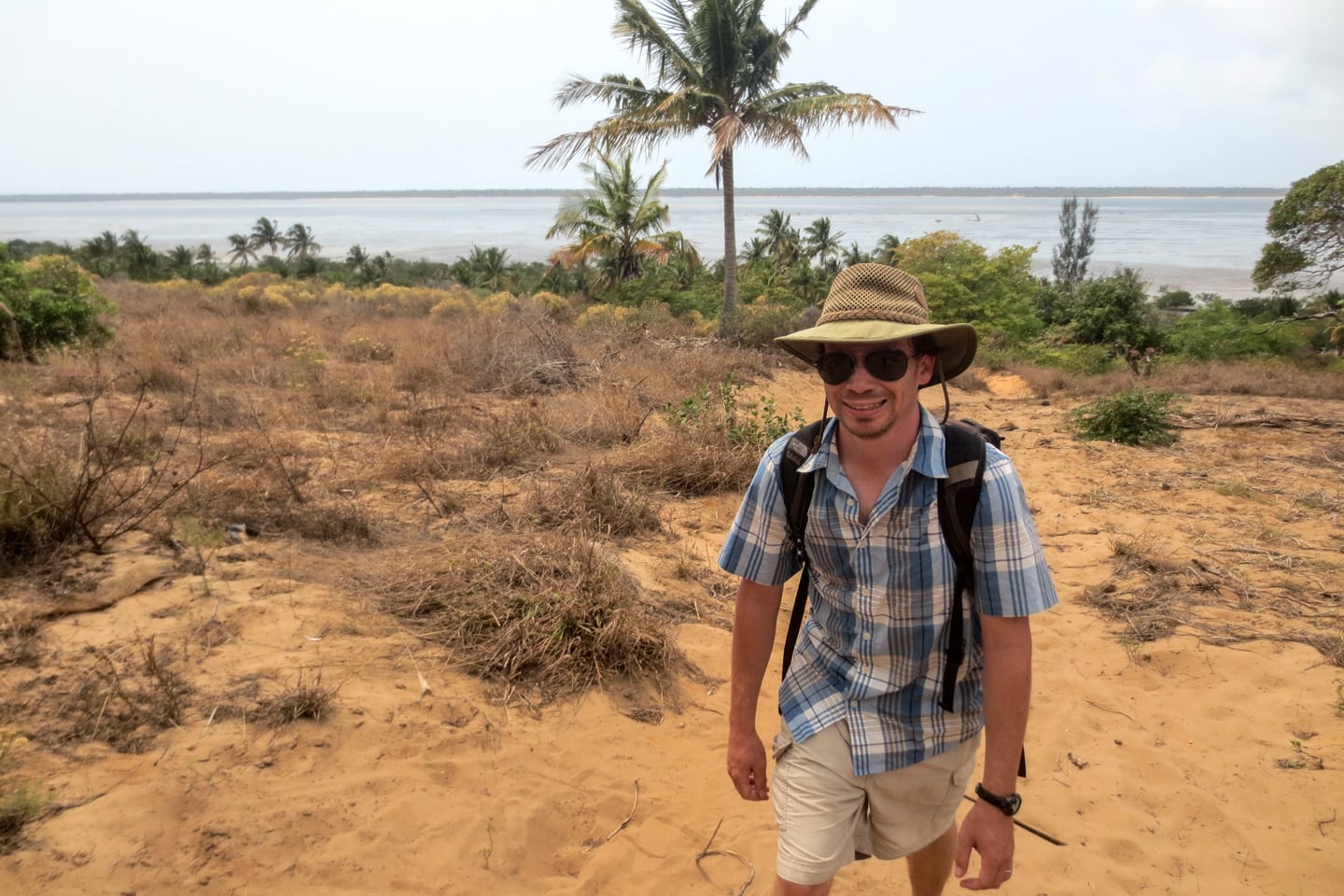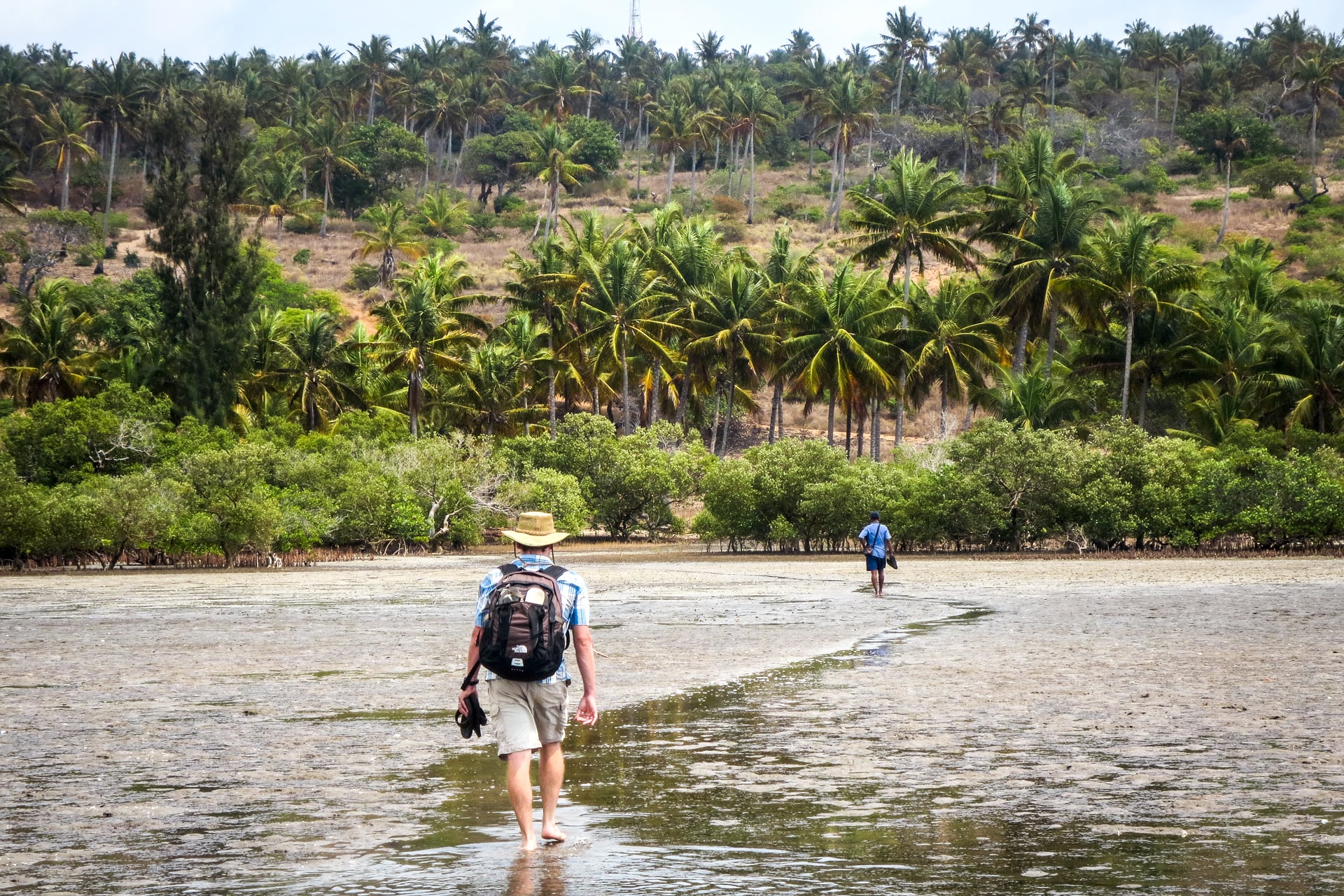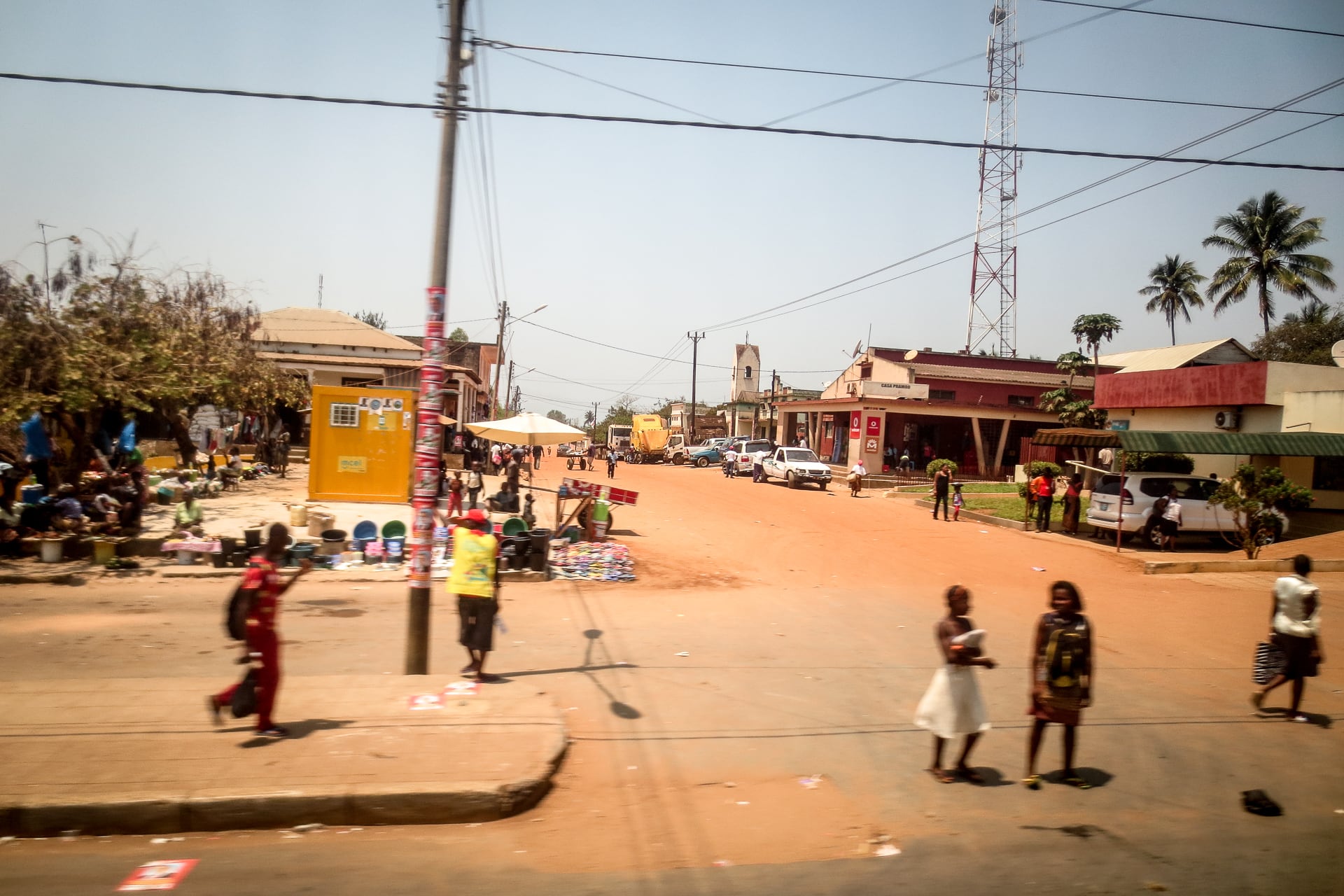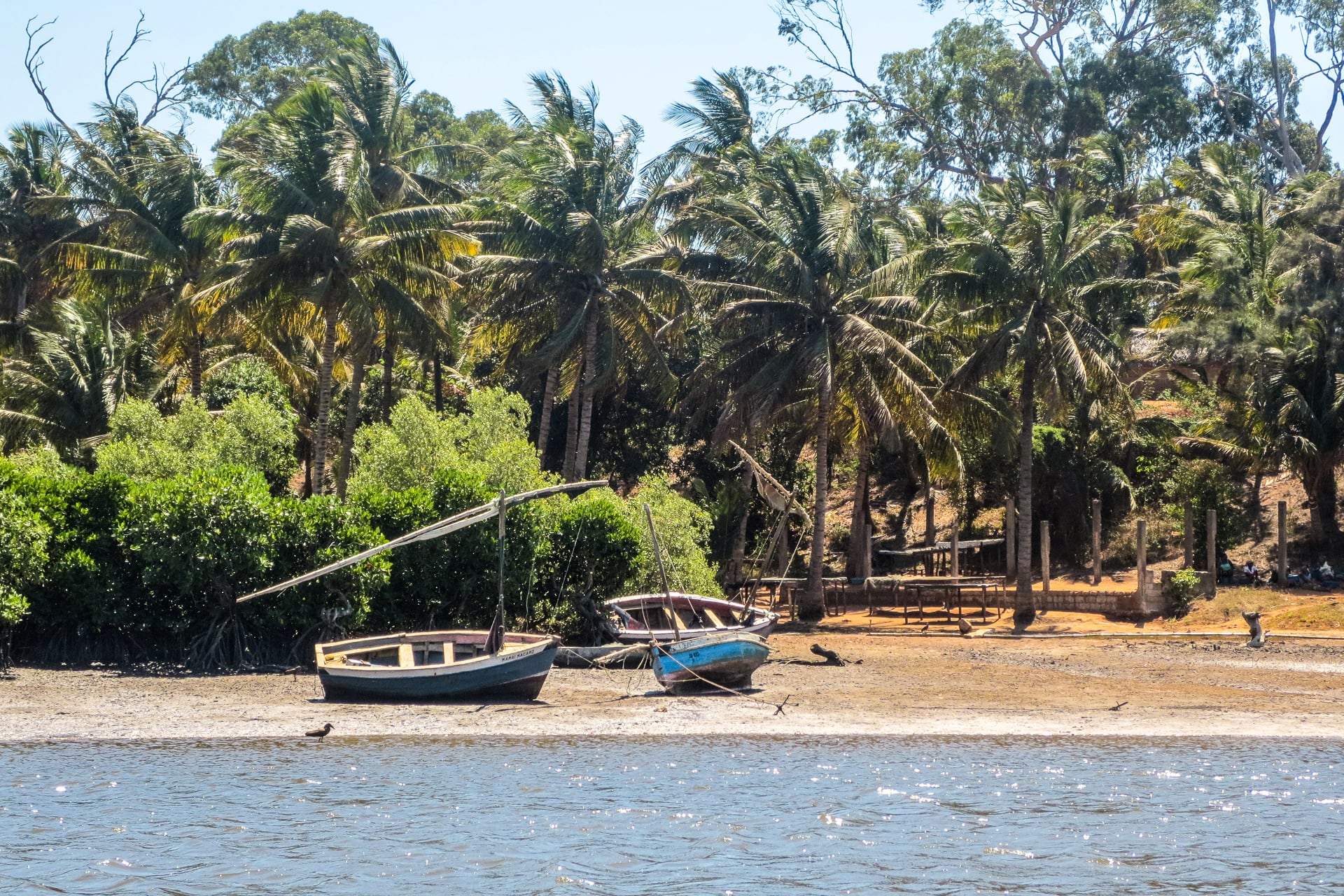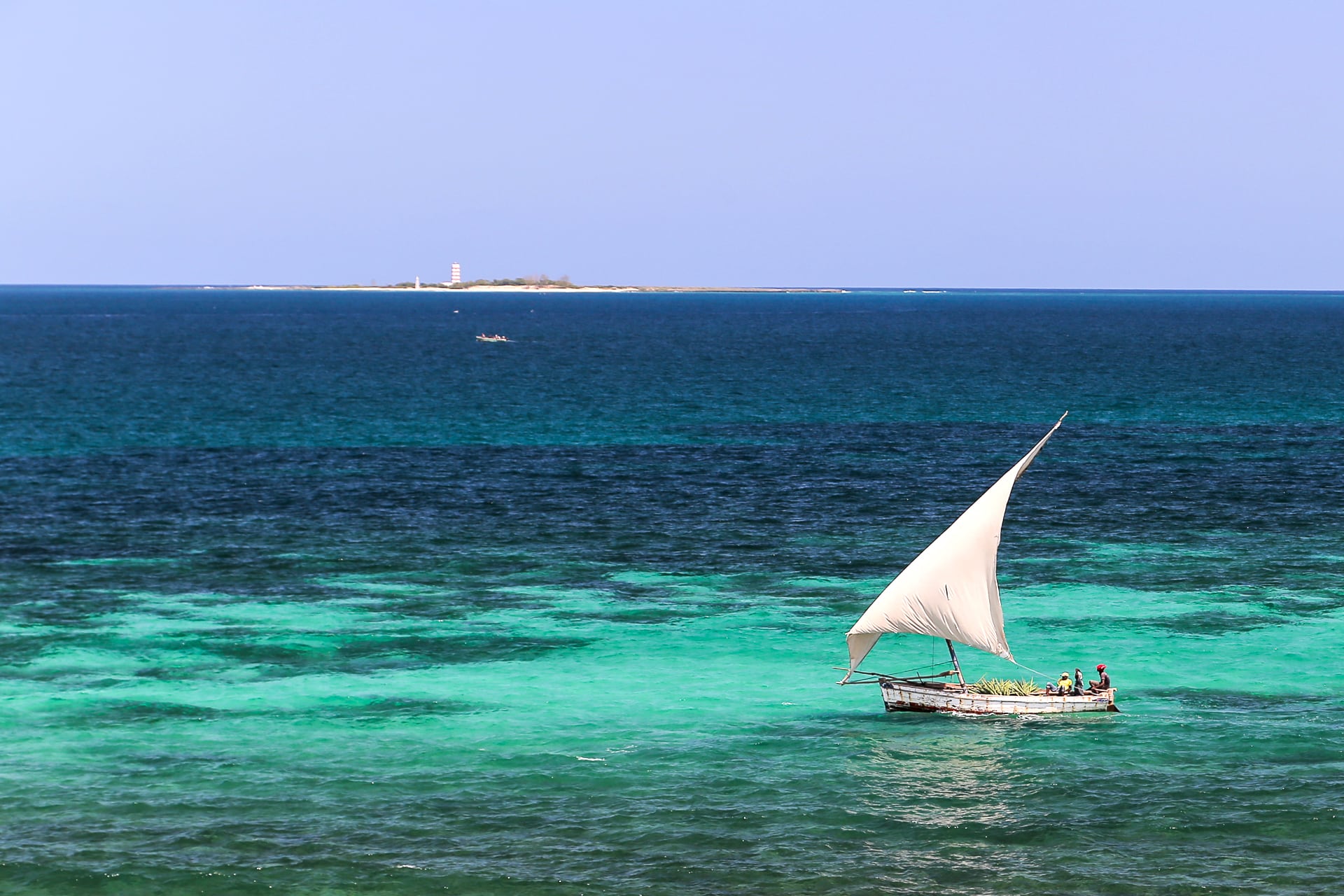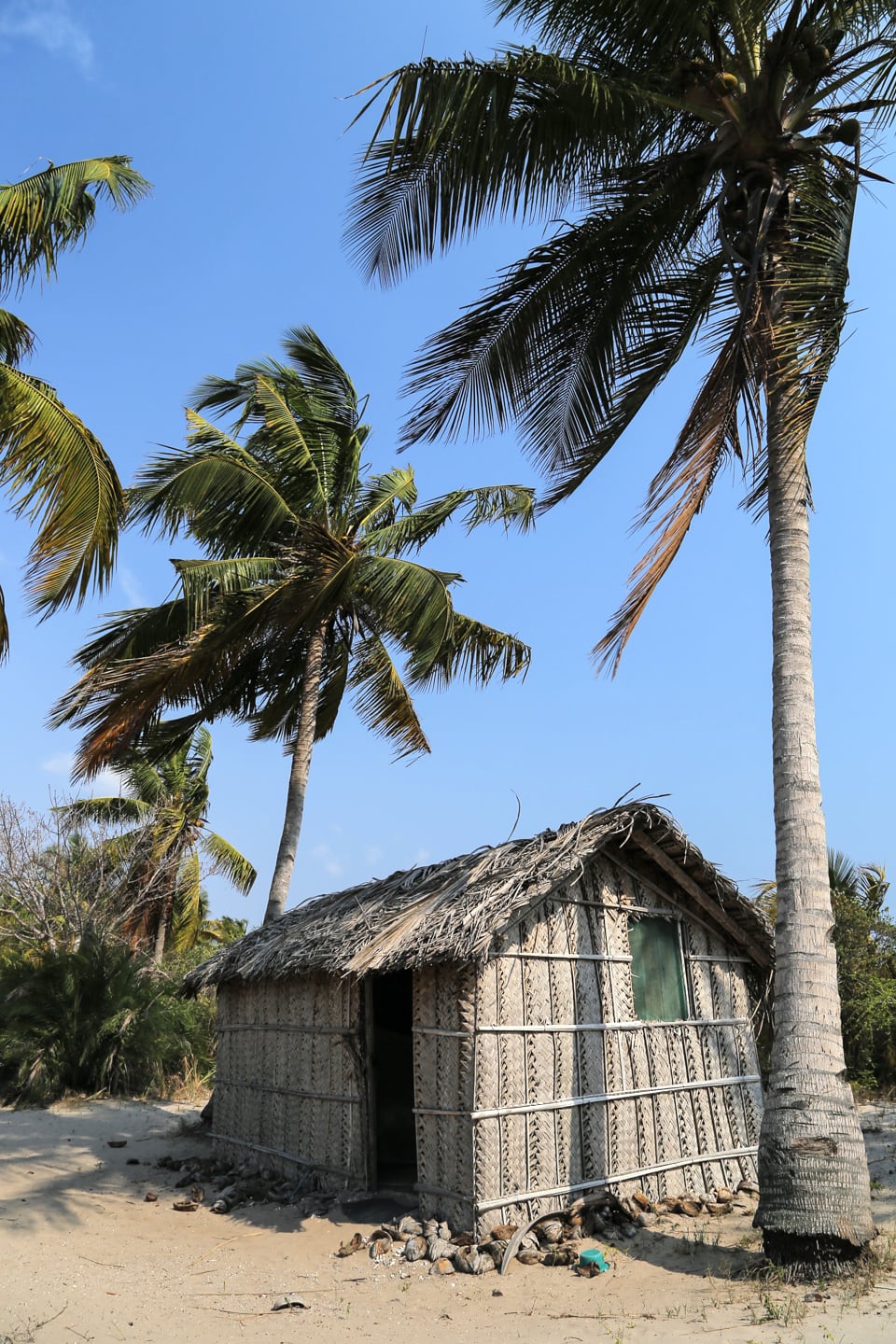
I am not quite sure how long it took to soak in — if it ever actually did — that I was back in Linga Linga, but on the morning of October 9th, I found myself here with Lori, as the sun’s powerful rays burst through every hole and crevice of the macute (thatch) bungalow we were occupying for three days (above).
I always slept well at Funky Monkey, and that night was no exception. No electricity, no fans, no lights, no nothing, but peace and quiet (save for the confused early morning rooster that seems to make its way all over Africa — he’s what earplugs were originally invented for, I’m sure).
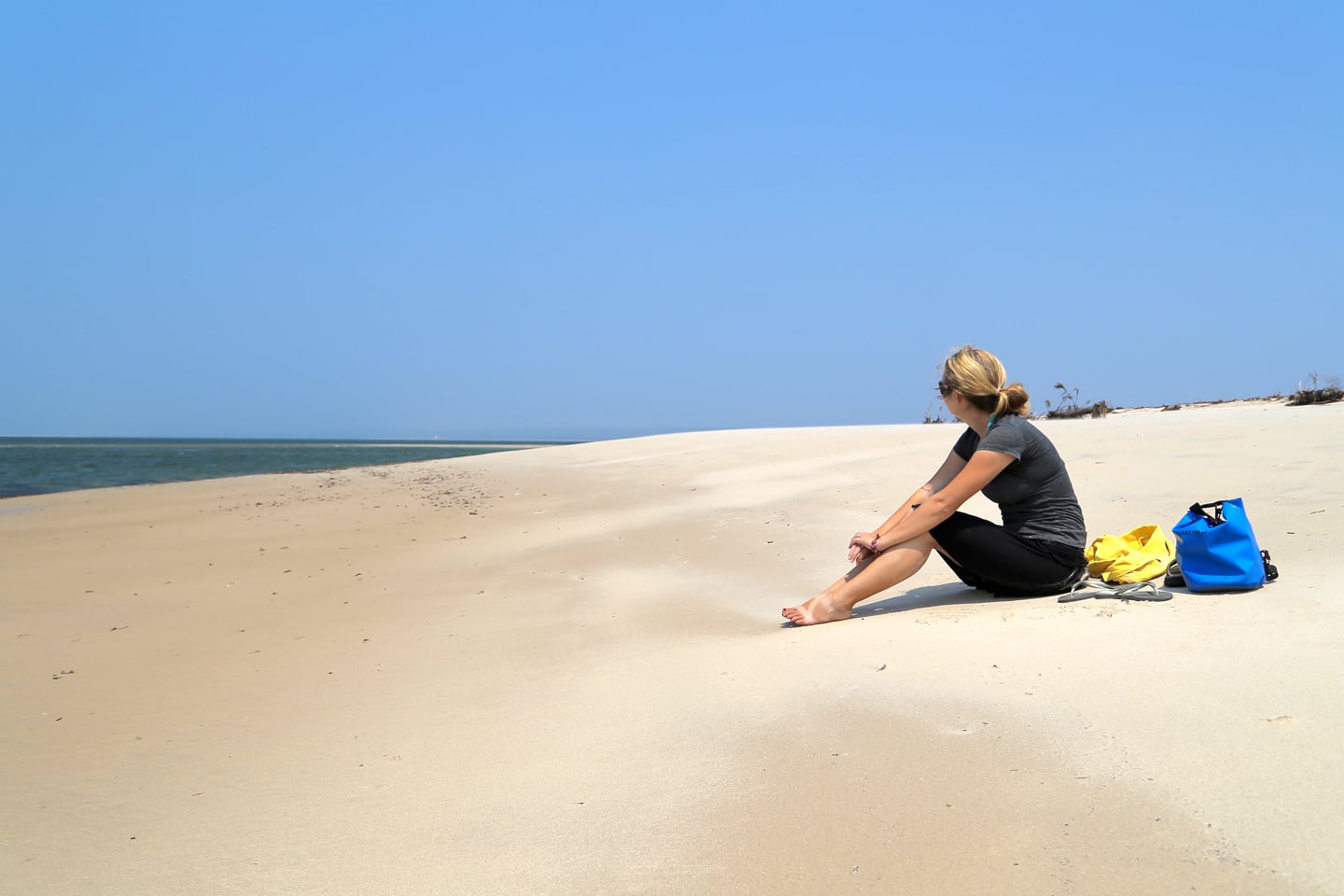
Breakfast and a chat with Lucio — of course — before heading straight to the beach. And we were blown away by what we discovered! That indeed the beach I remember — my beach — still existed. It just took a little tidal action to reveal. I don’t recall ever visiting Linga Linga on the full moon, so perhaps this is why it looked so different to me (and why the tides seemed so extreme this time around).
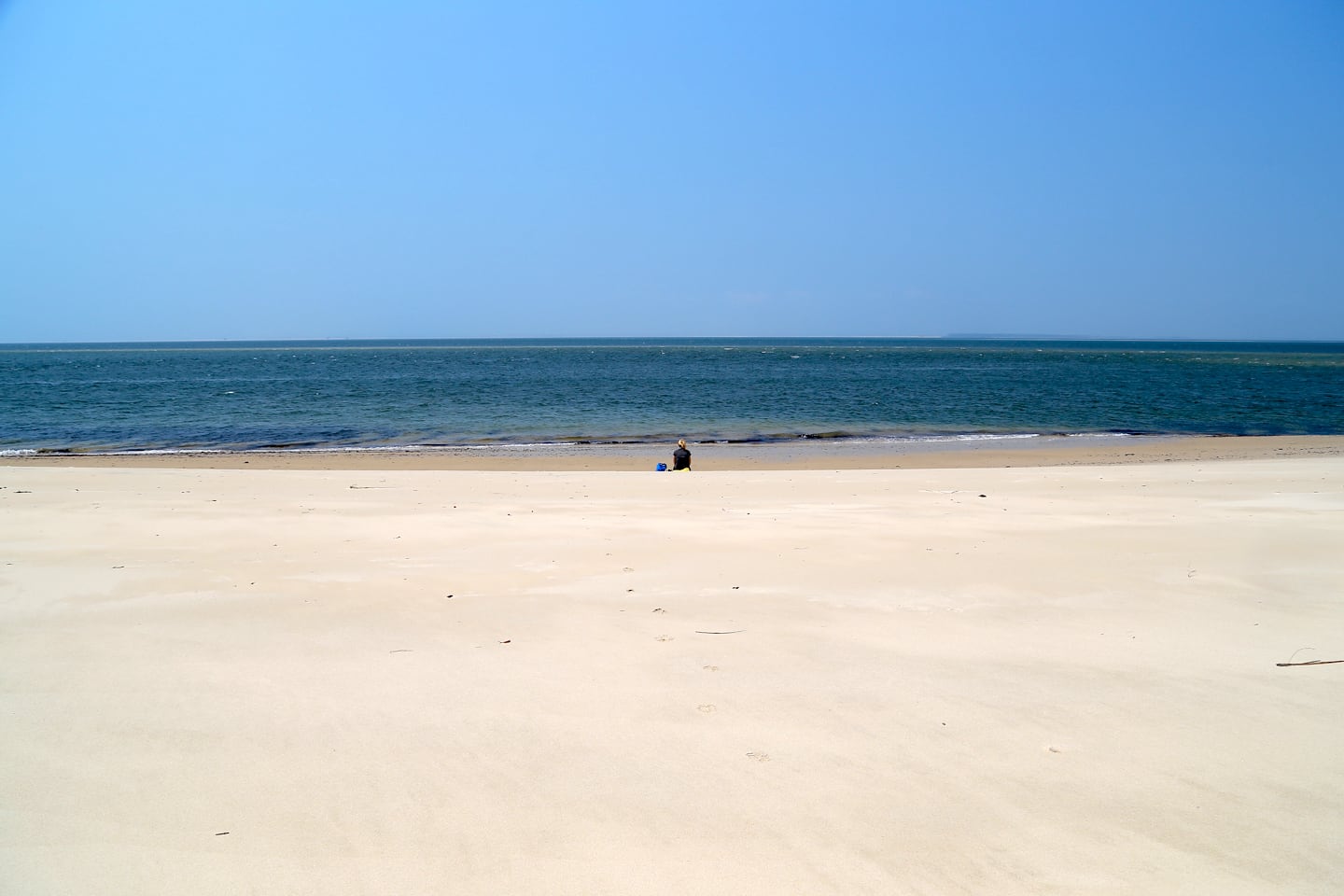
Oh, that golden-white sand. The stuff of dreams. I can think of very few beaches as perfect as Linga Linga — and I’ve visited lots over the years. The quality of the sand between your toes, pristine as they come, the water crystal clear, warm and inviting. At low tide, we were able to avoid most of the big fat white jelly fish, but as the tide came in it was a different story. This time of year, the waters became a mine field of jellies — thankfully just your average, run-of-the-mill white jelly and not Portuguese Man-of-War or Box Jellies. But still off-putting.
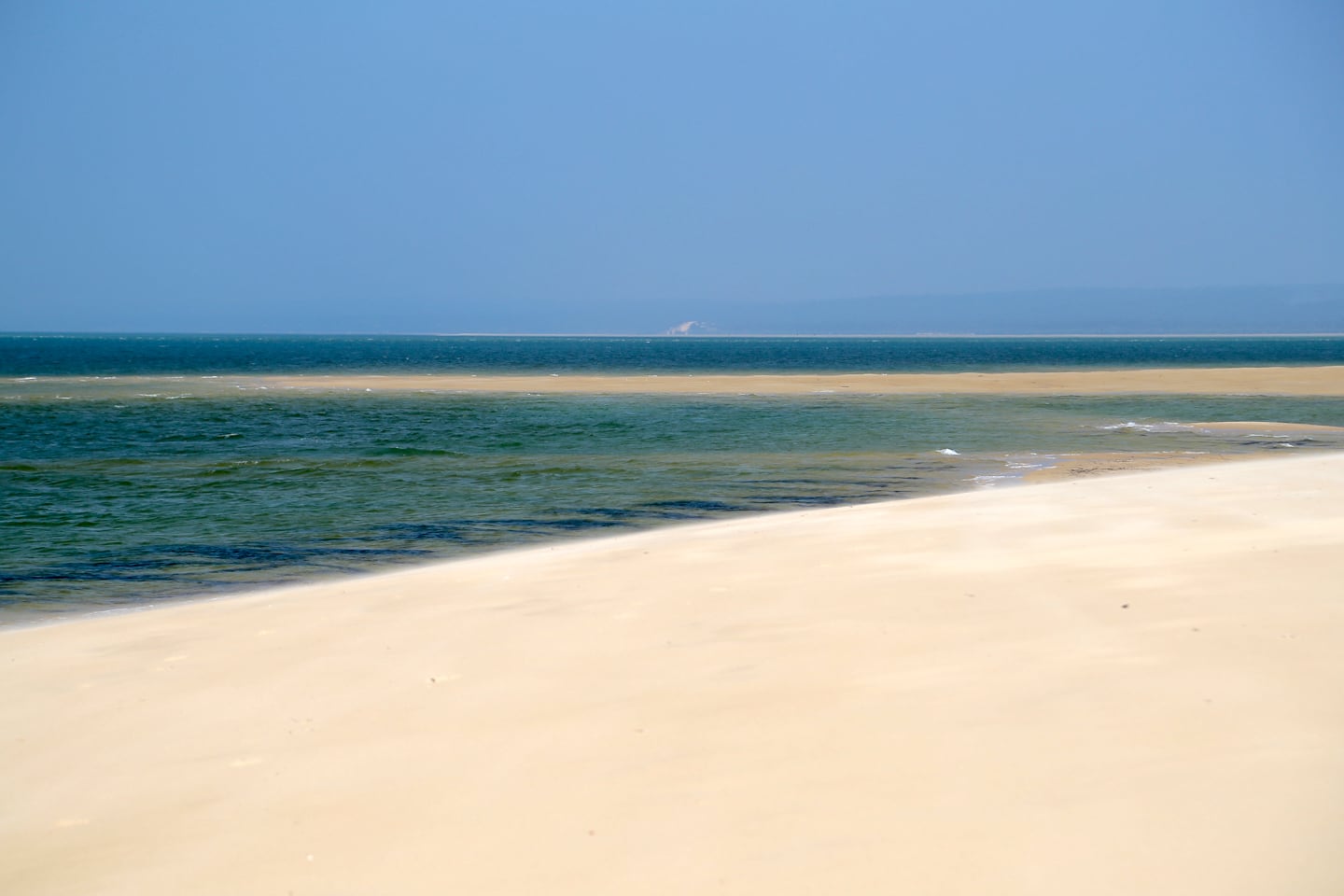
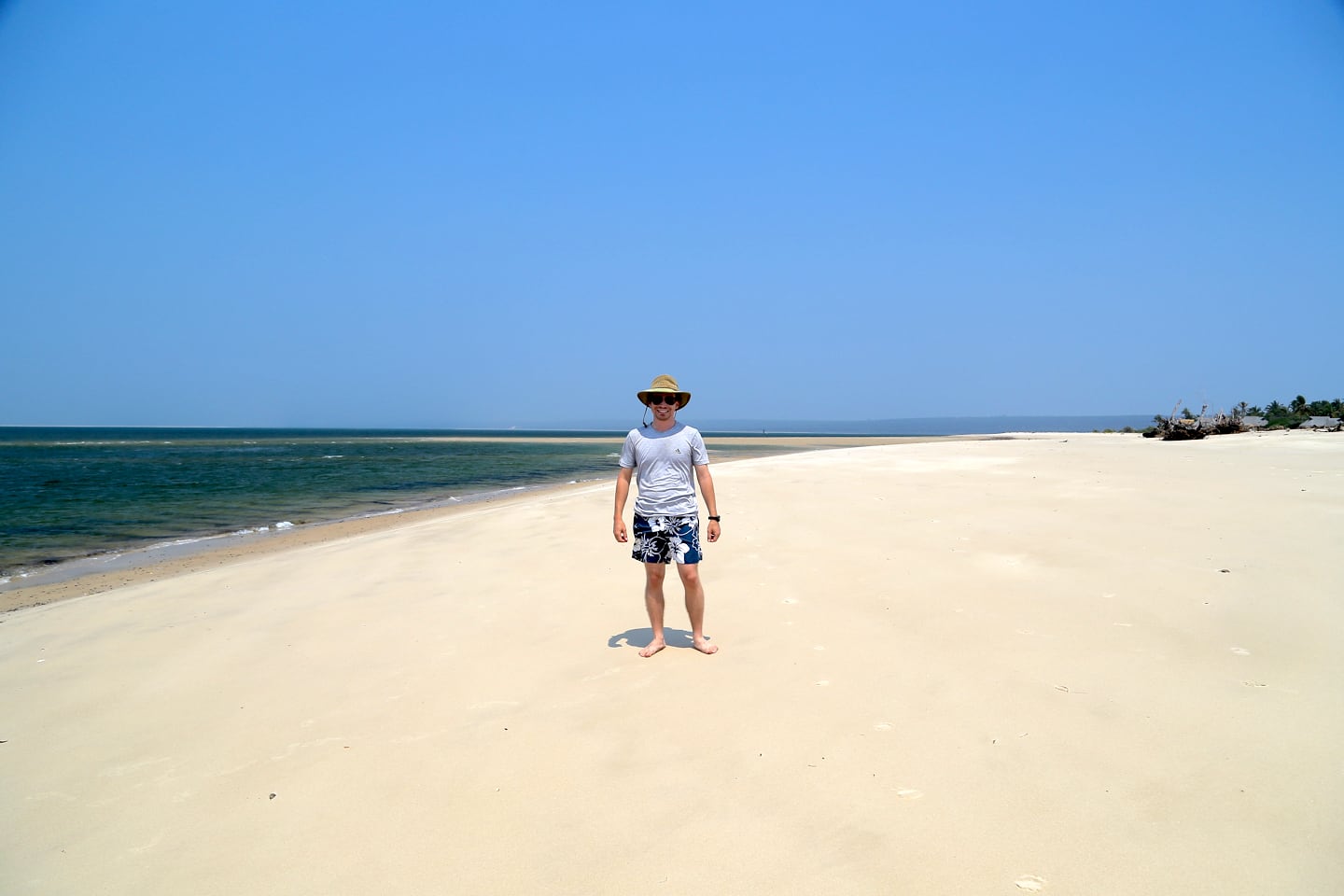
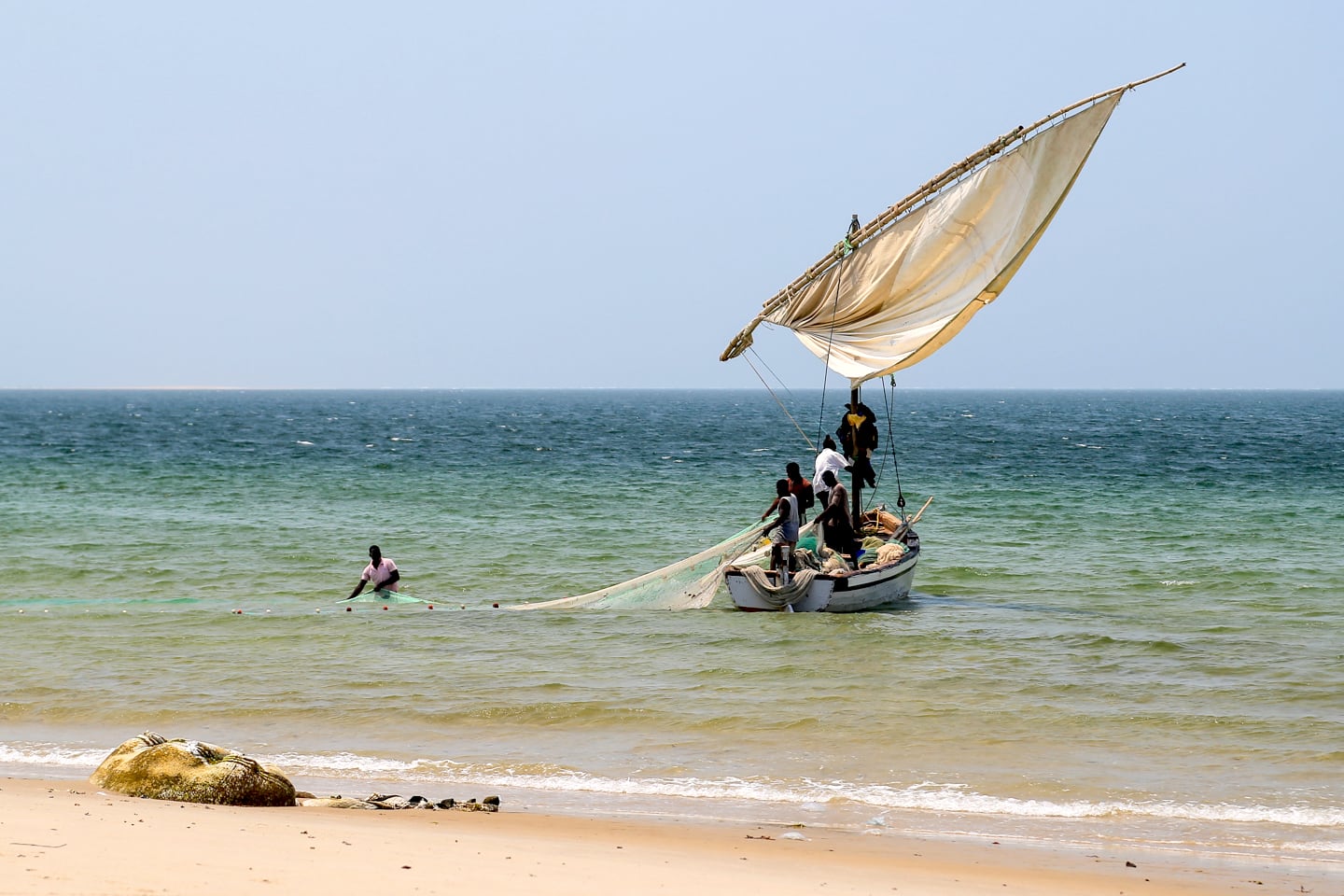
Just as I often had a decade prior, we came upon a group of young men hauling in the morning’s catch from a dhow. I’m certain this same scene has played out for decades, if not centuries, but with all of the new construction and development in the area, it’s nice to see that some traditional livelihoods live on.
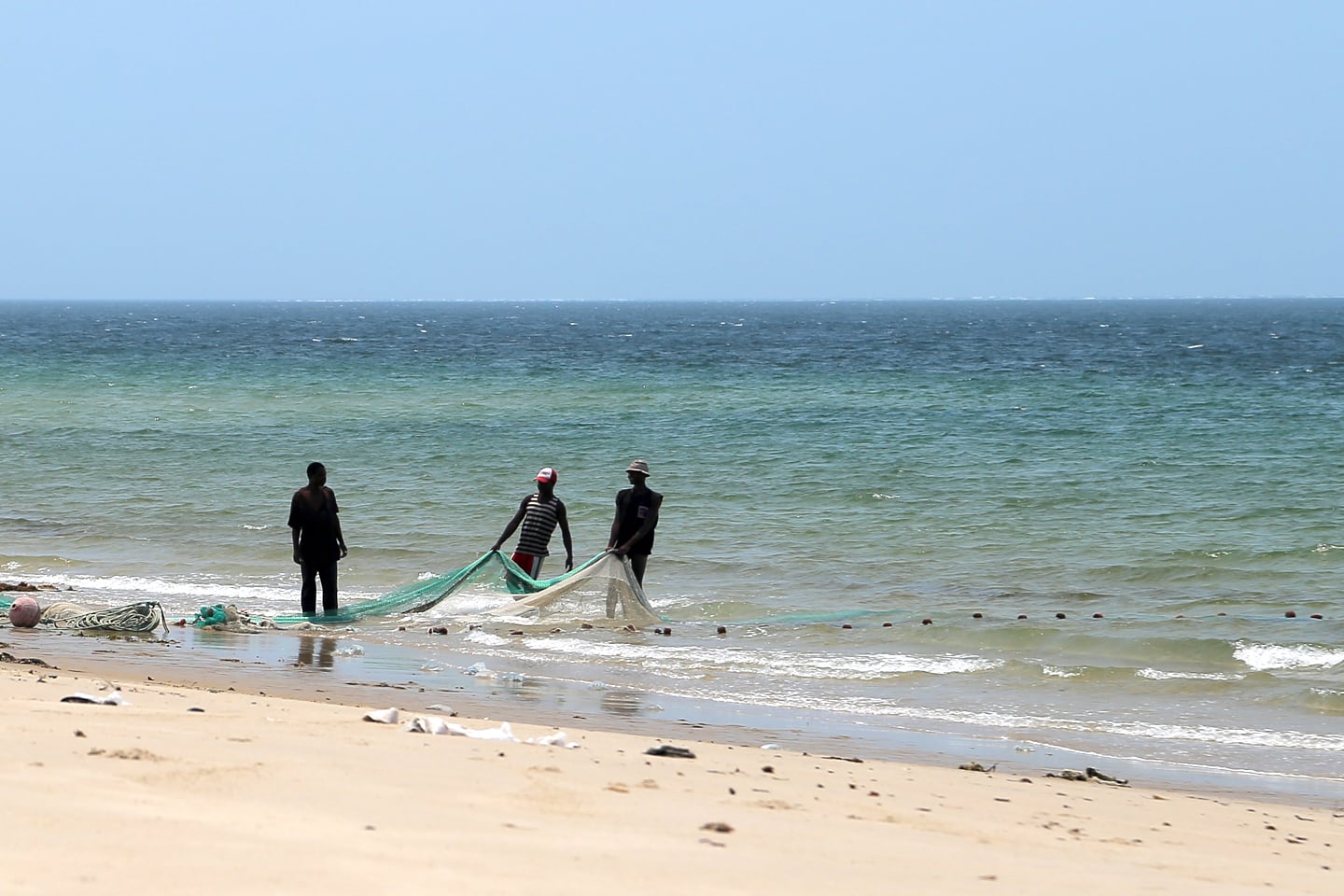
Back in my Peace Corps days, I’d occasionally run to assist a long line of fisherman pull ashore the long and heavy net. Today, however, I was content to observe. It didn’t seem like as big of an affair as it had during some of my visits, when more than a couple dozen of villagers would join in to heave the mass of net onto the banks to assess the catch.
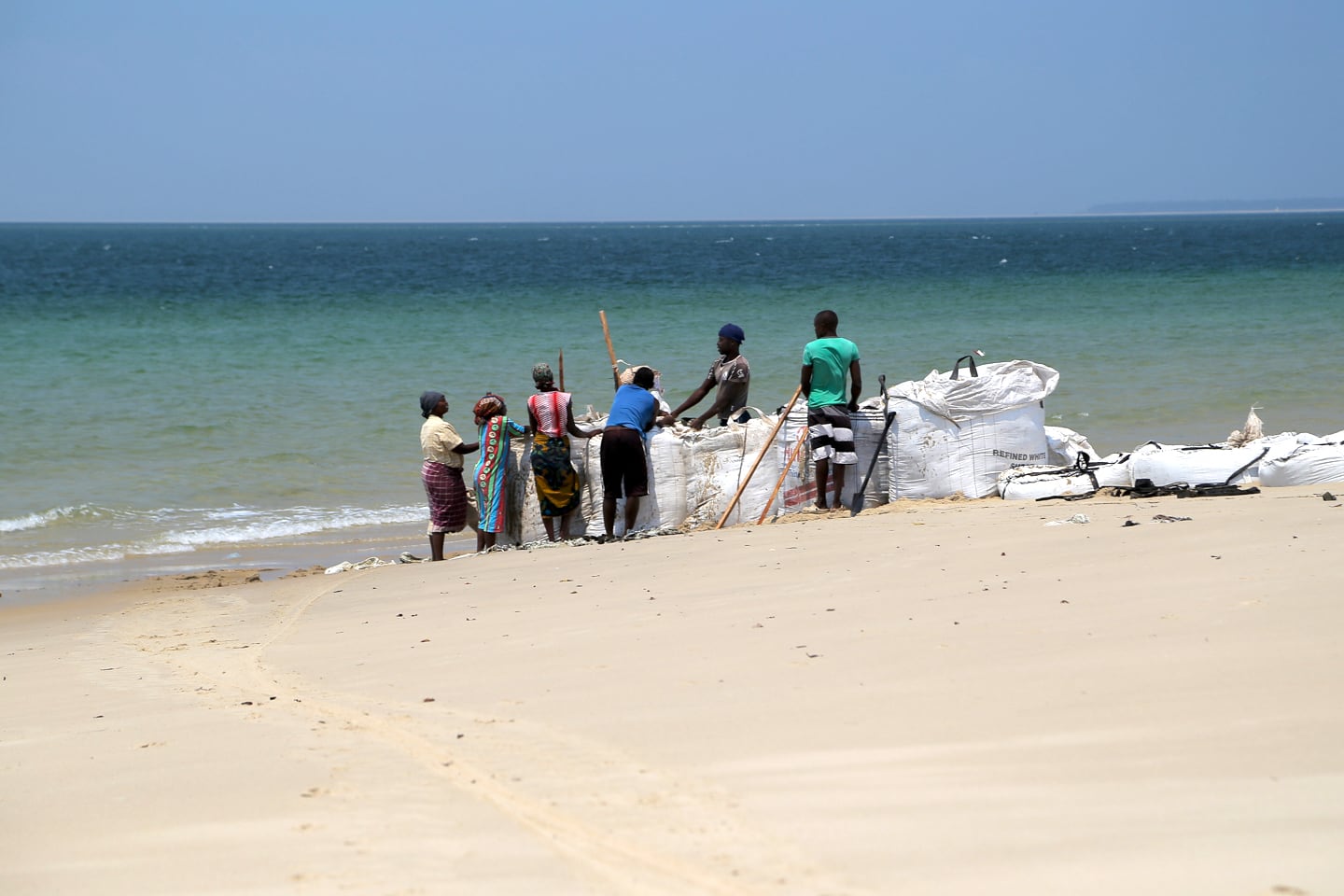
Farther down the beach, there was a group of individuals filling sandbags for a nearby lodge that had been constructed since my last visit. I had remembered a pristine palm-lined coastline running up the eastern shore of Linga Linga for miles and miles. Those days appear to be numbered, but erosion has certainly made things difficult for the handful of lodges which have setup shop here.
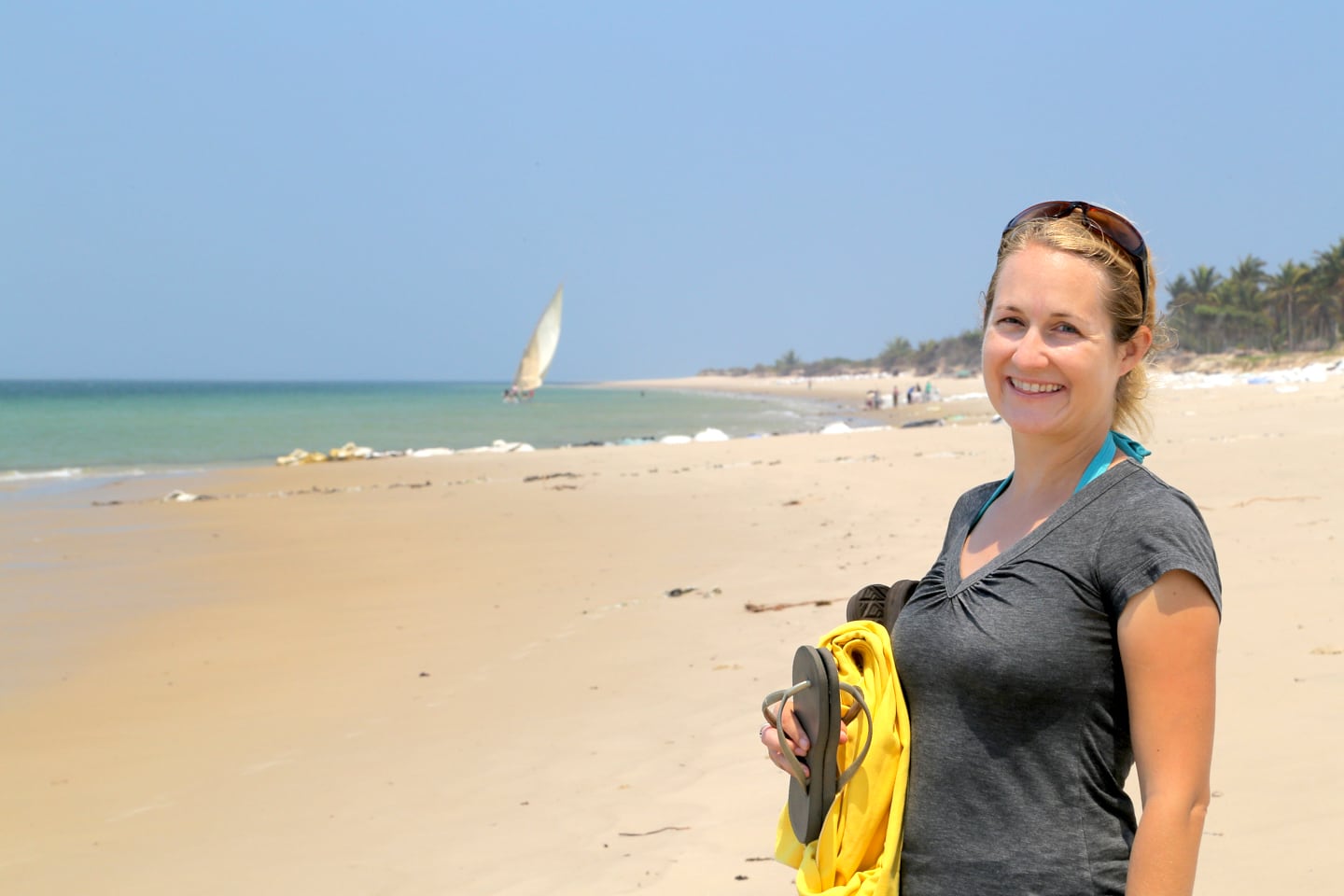
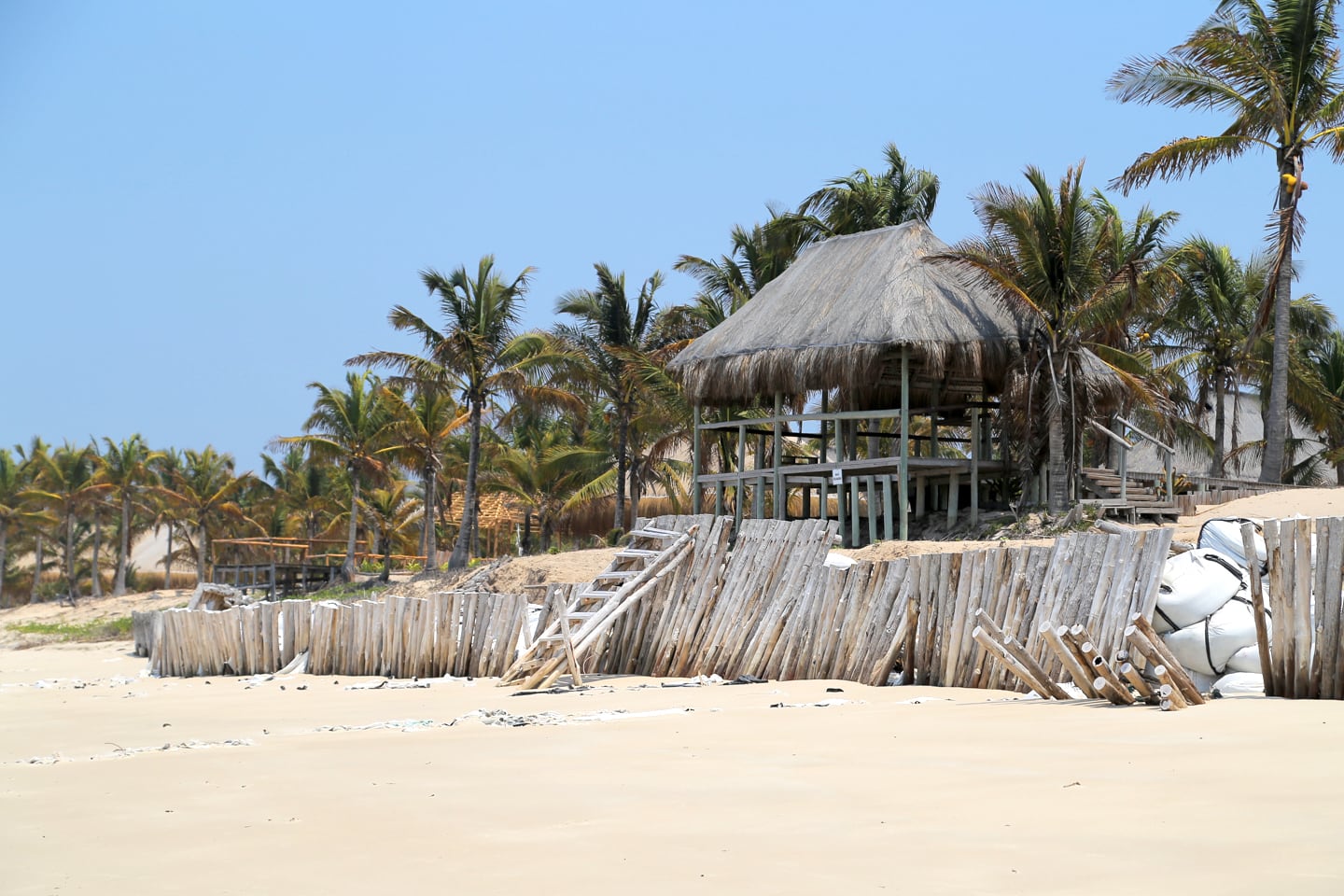
This one — a fairly swanky resort — seemed to have suffered the worst of it. The ocean appears to have shown no mercy, but this is nothing new. Severe erosion has long been an issue along the Inhambane coast. It’s hard for me to believe that these folks didn’t fully grasp what they were getting themselves into.
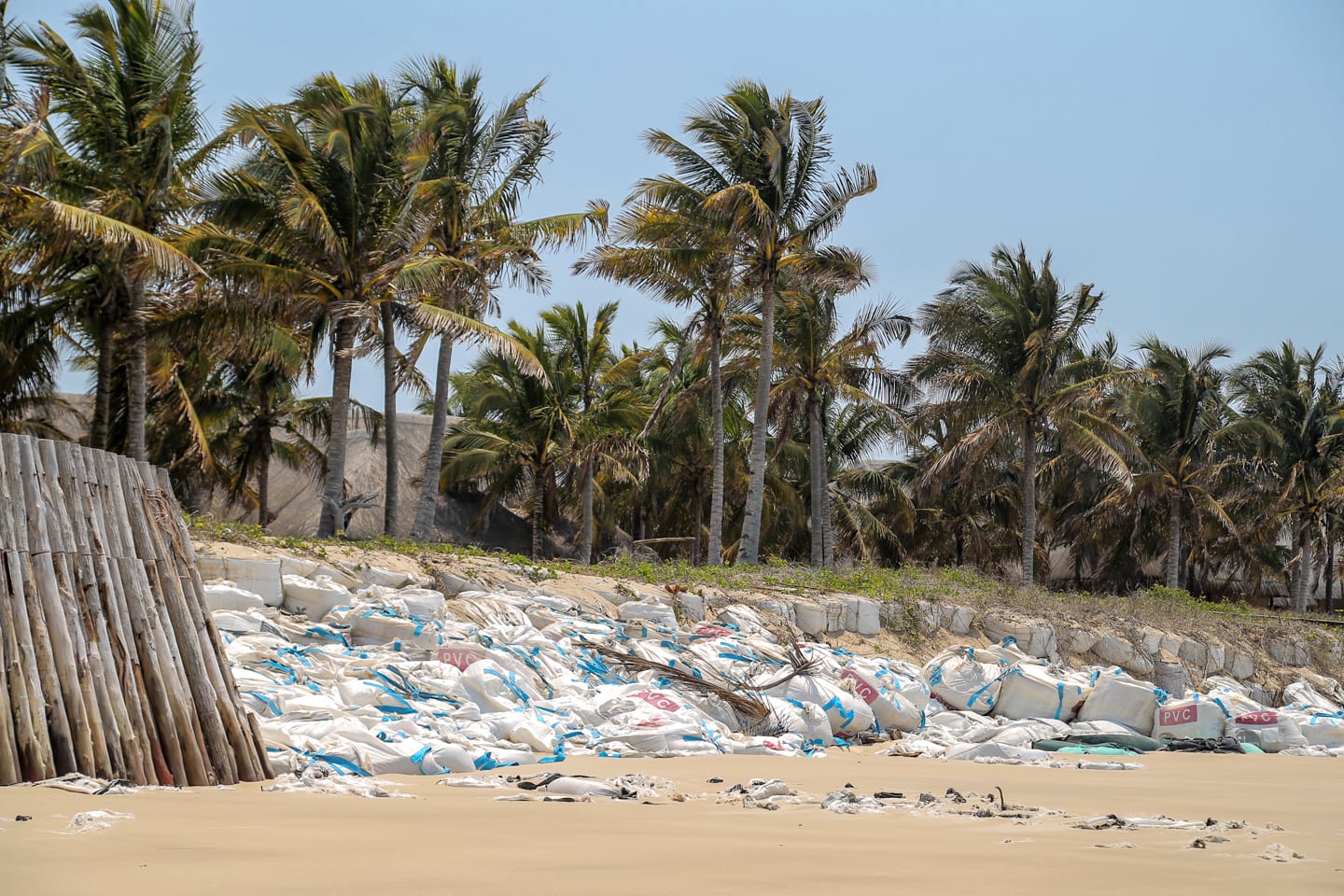
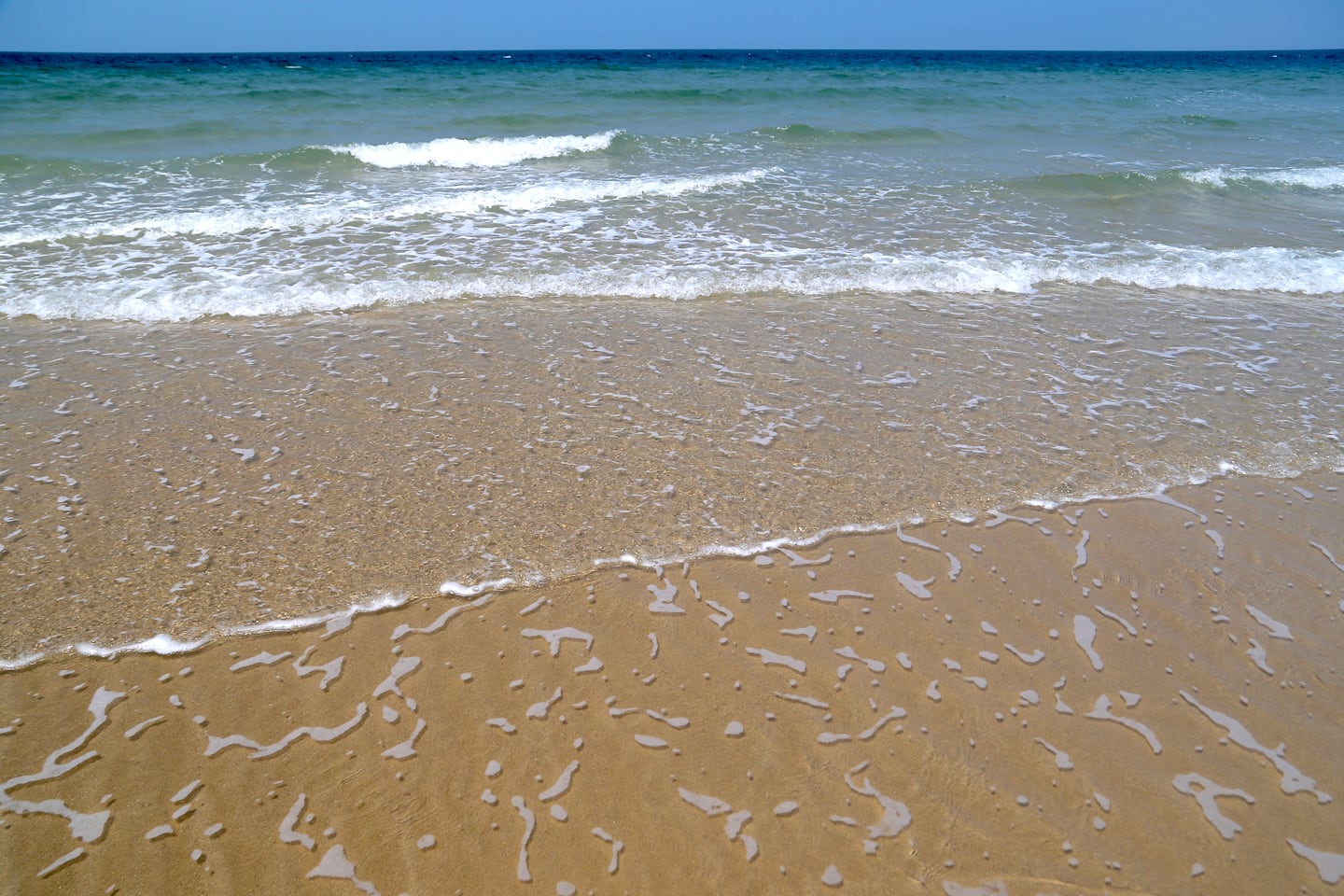
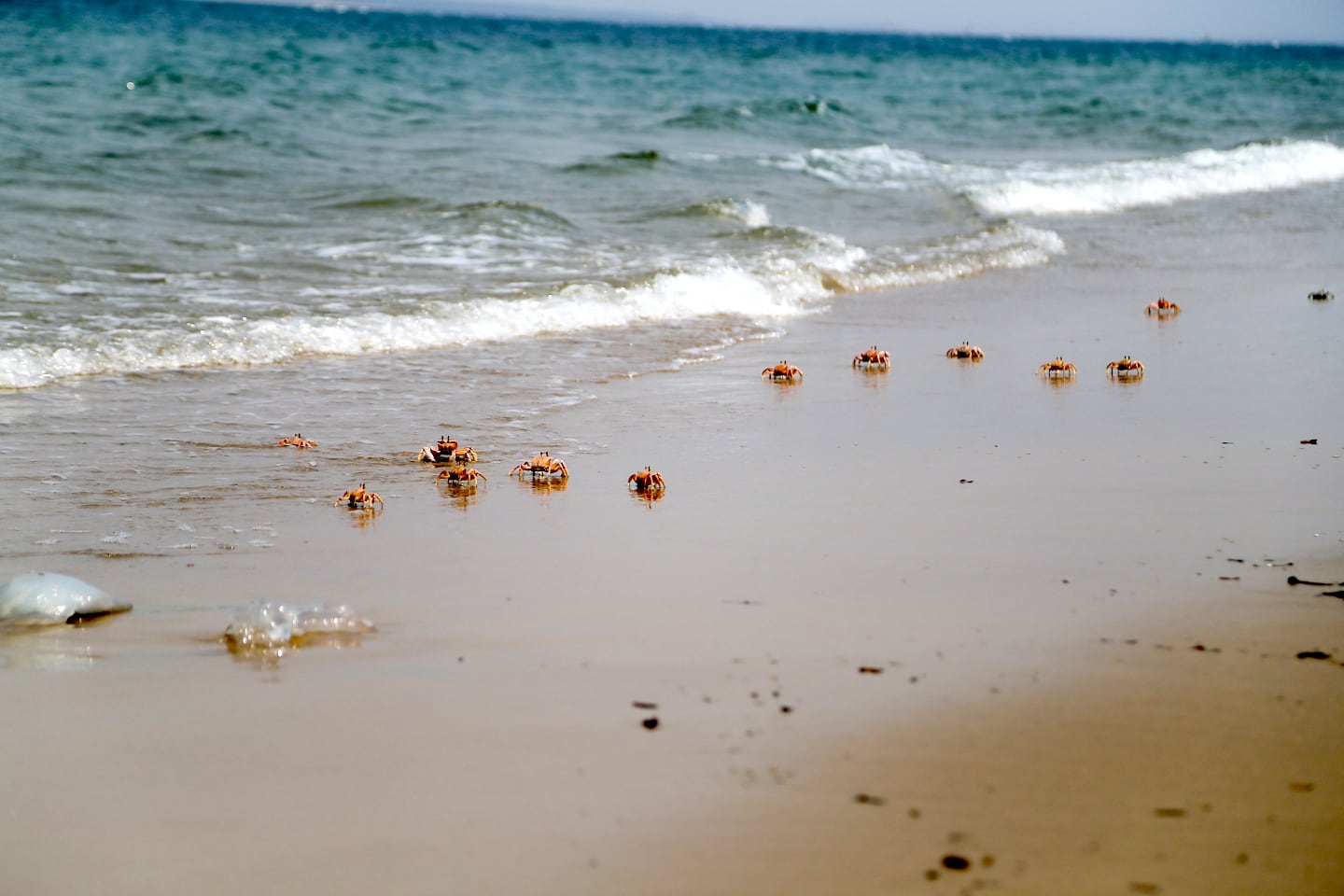
Lori loved watching the crabs dodge the waves (and us) as we walked along the beach.
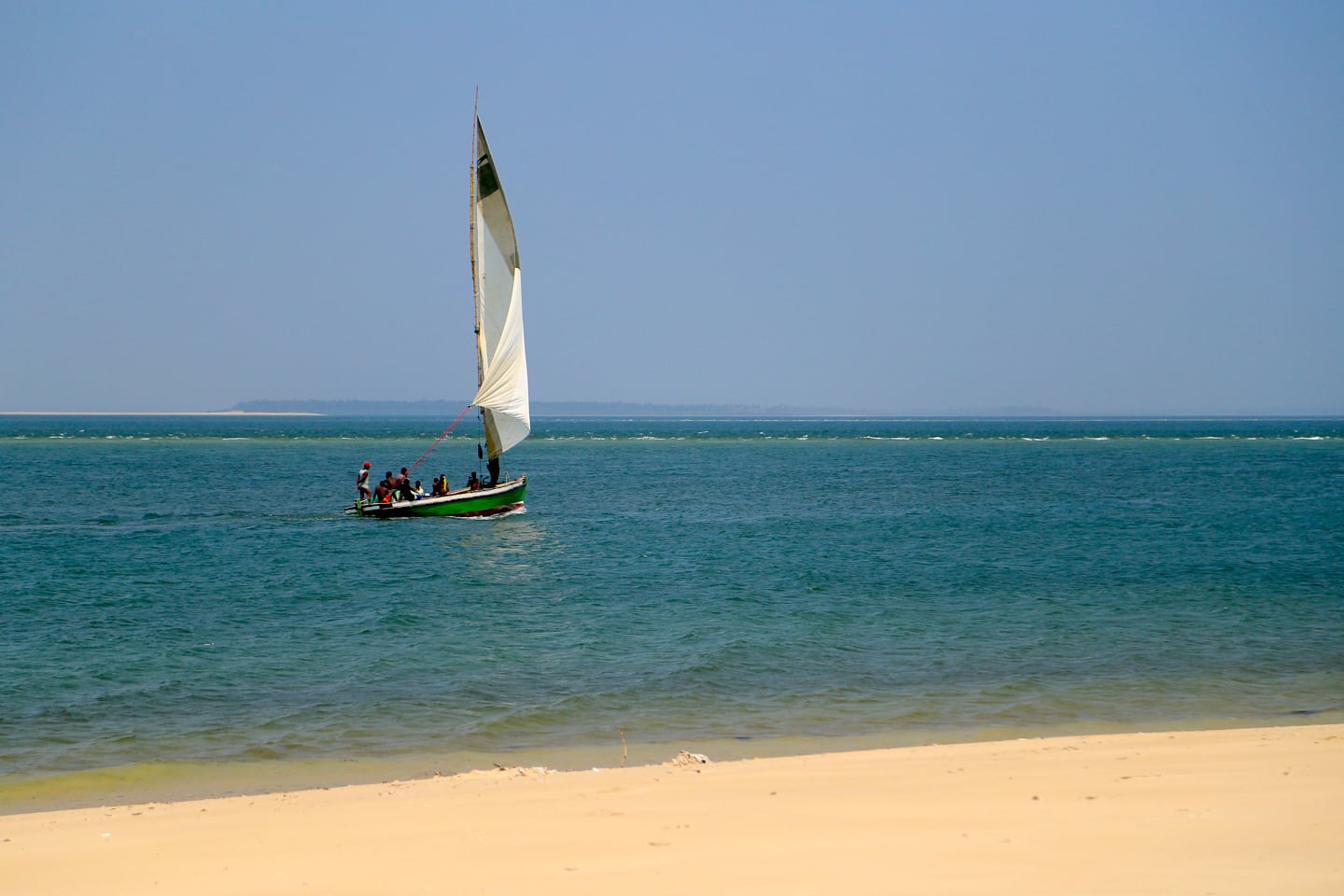
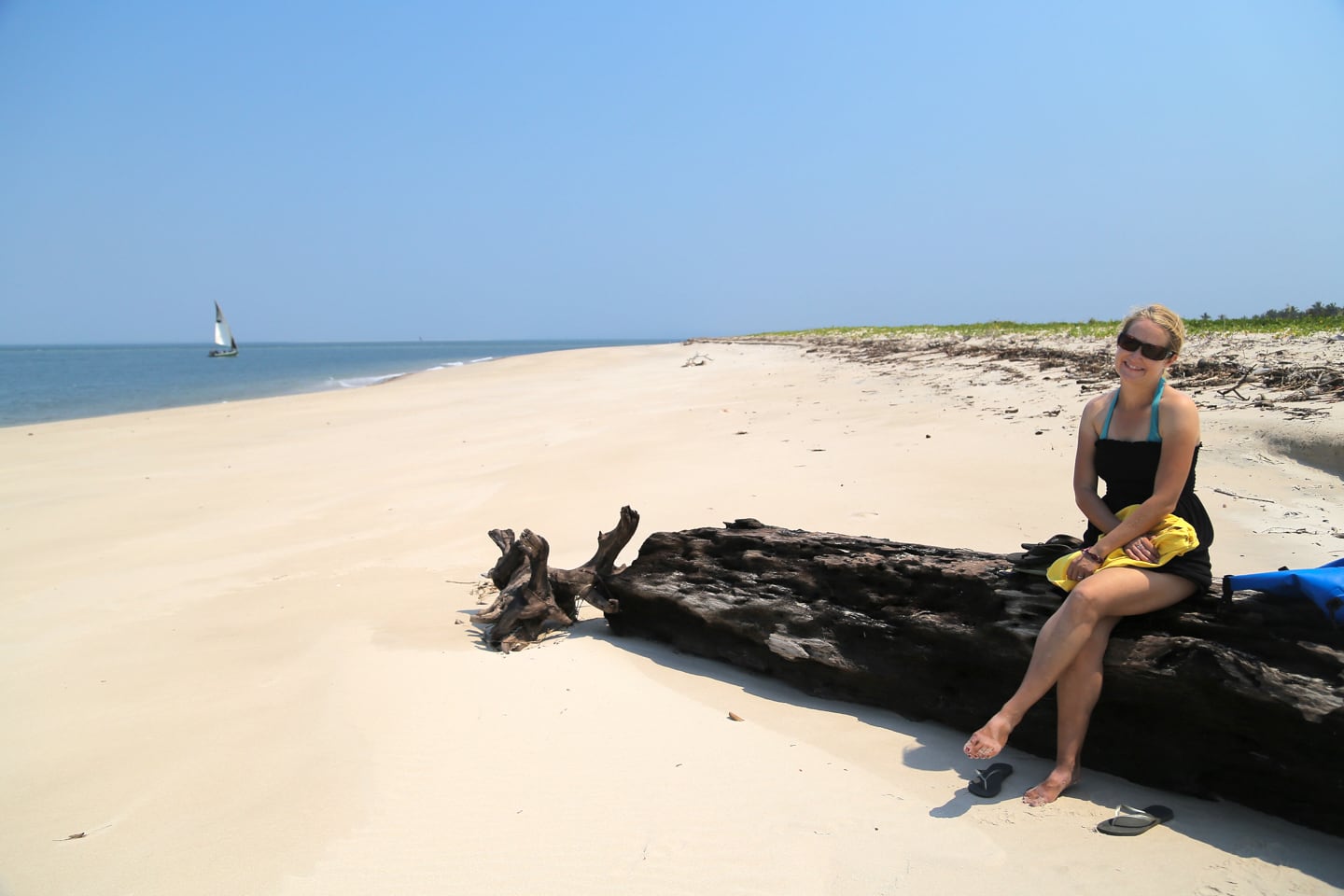
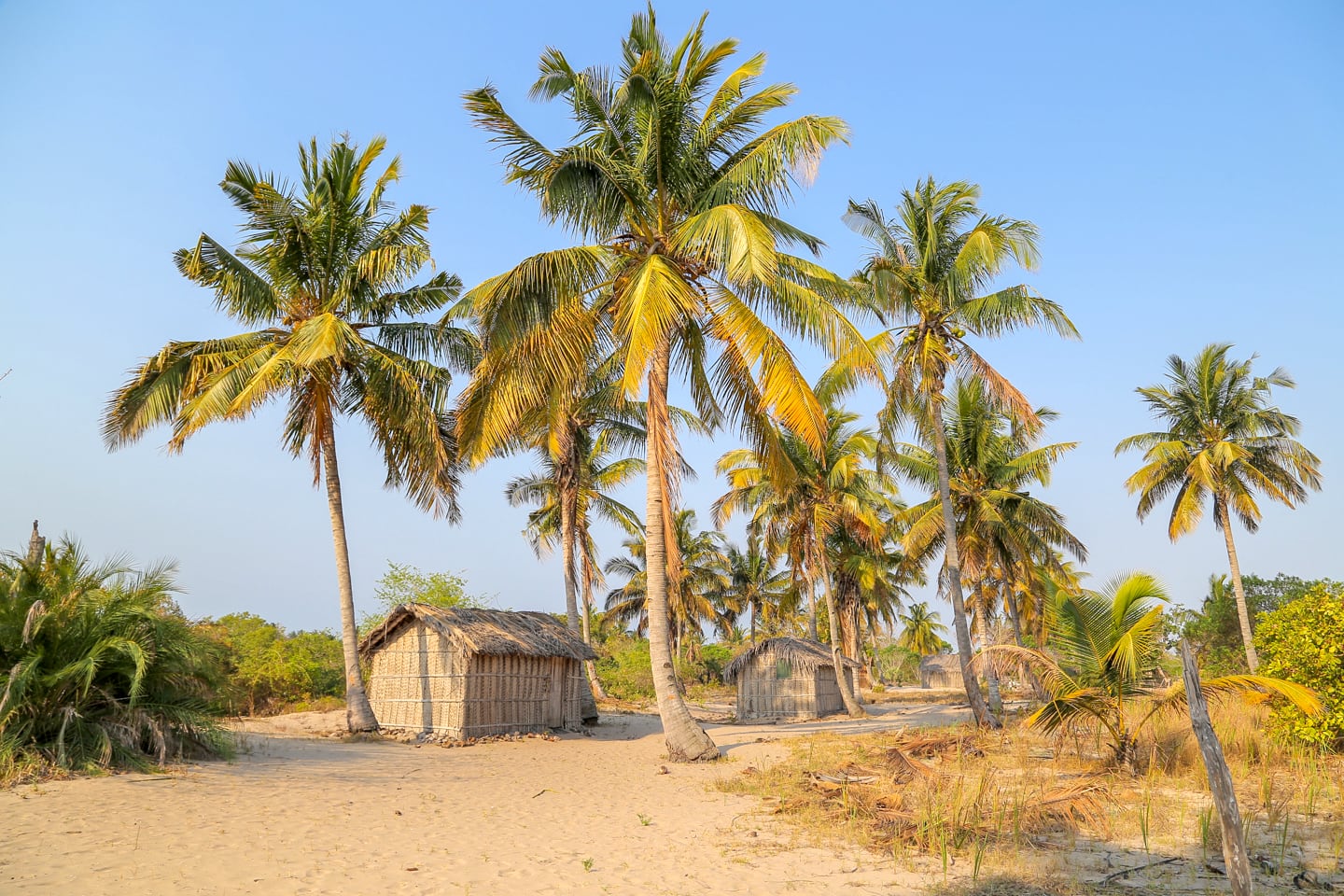
Back at Lucio’s, it’s lunch time, and we’re excited to see what’s in store. Last night had been a tasty meal of matapa and fish balls. In Ana’s absence, Lucio recruited one of his other wives to fill in. He called it “improvisation.” Nobody can hold a candle to Ana’s cooking, but Lucio and his improvised wife-cook came pretty darn close.

It was great to catch up with Lucio and hear about how things were going. Fortunately, he still has all 24 of his children, and they sound to be doing well — though I was a bit surprised that he hadn’t added to that number in eight years. He remembers with clarity when we all used to come out and visit, and when subsequent PCVs would come to visit as well. But he also lamented the fact that it’s been a few years since he’s had any PCVs visit, especially since there hasn’t been a volunteer at my old site for a while. It is a bit of a challenge to make it out here, but this surprised me nonetheless.
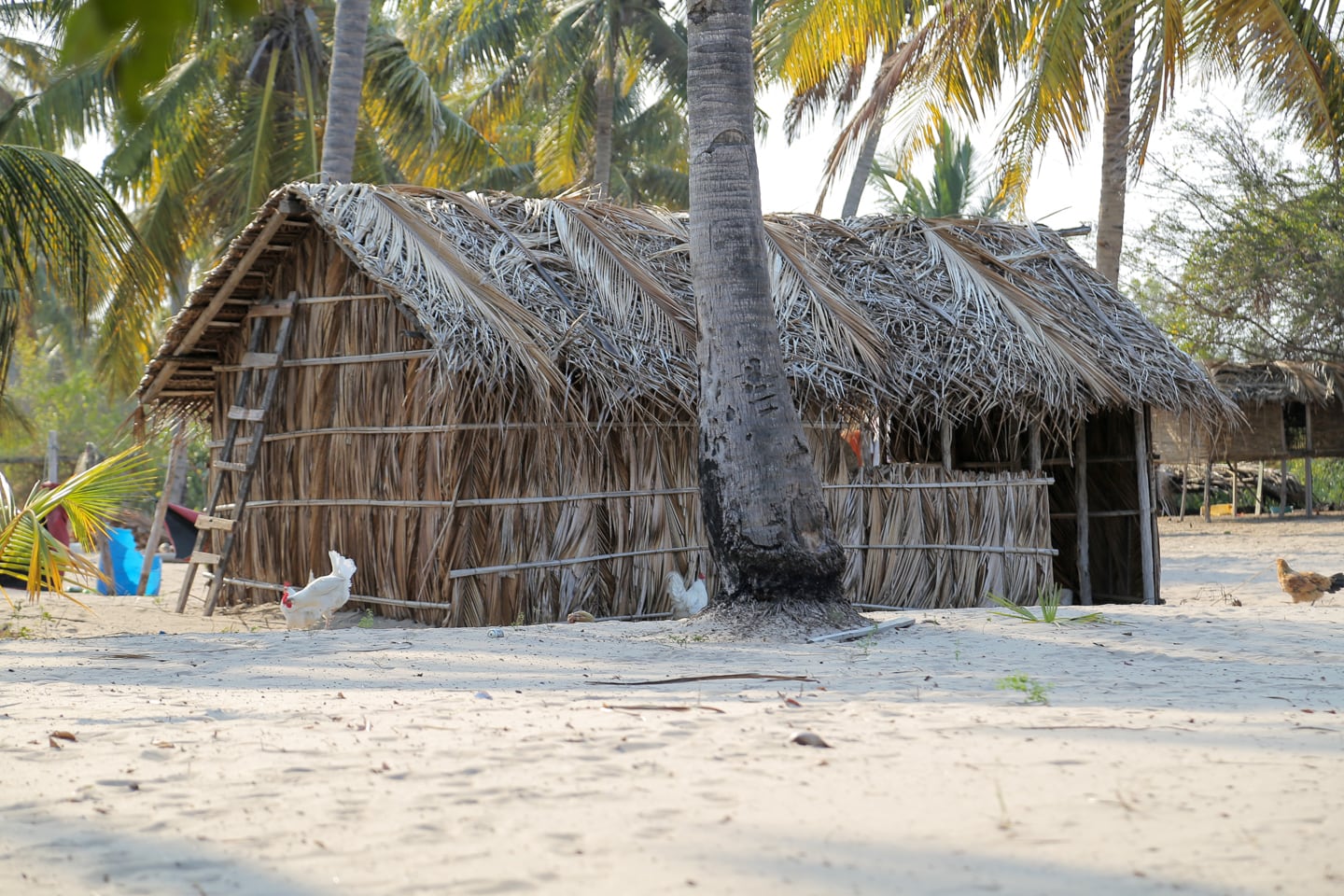
The old dining hall is looking pretty good these days — recently having had a re-thatching with fresh macute palms.
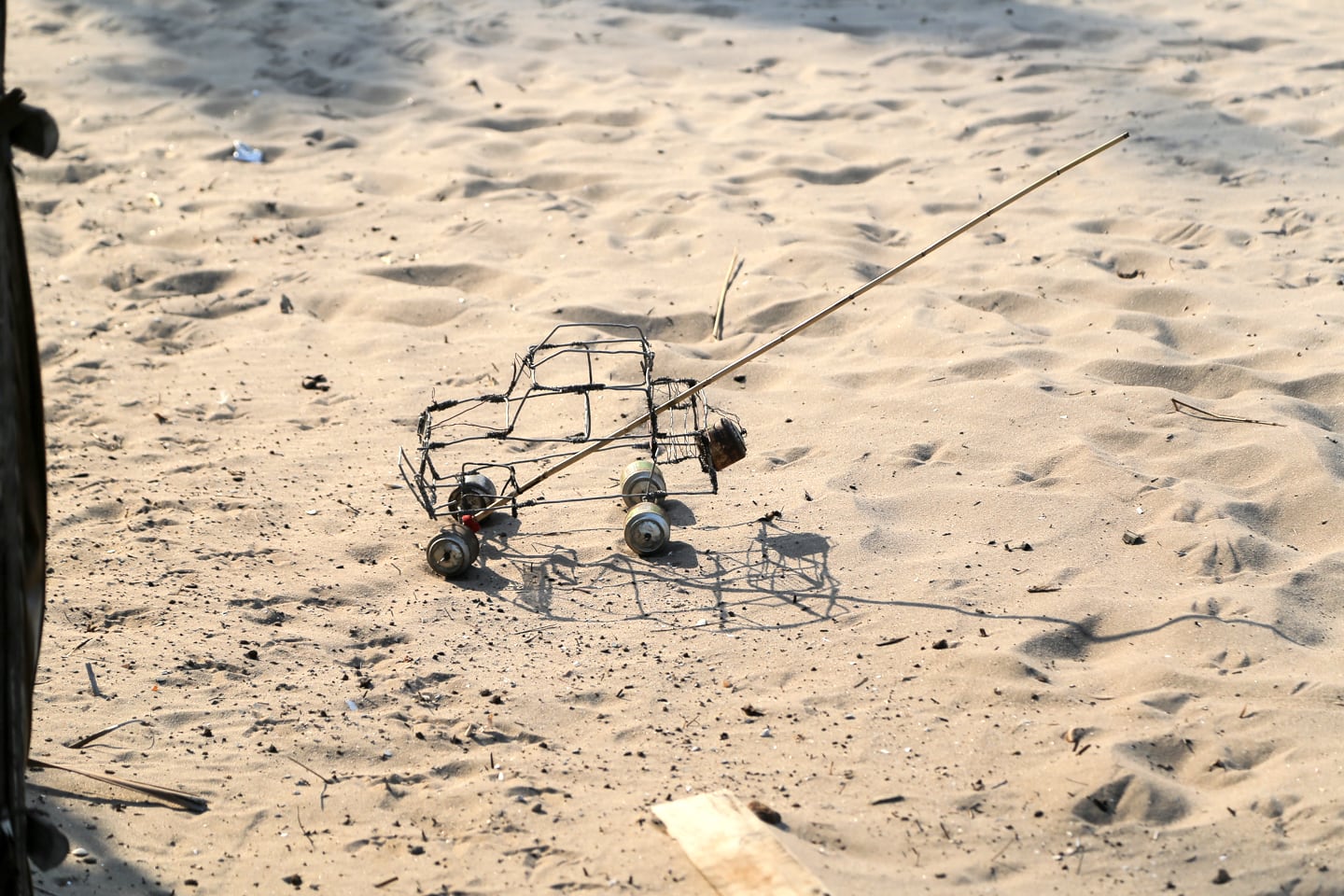
Lori was obsessed by the homemade push-car toys that Mozambican children make and play with all day — she was especially taken by the fact that the push stick also turns the front wheels. It’s amazing how resourceful kids can be — anywhere — when they don’t have ready access to store-bought toys.
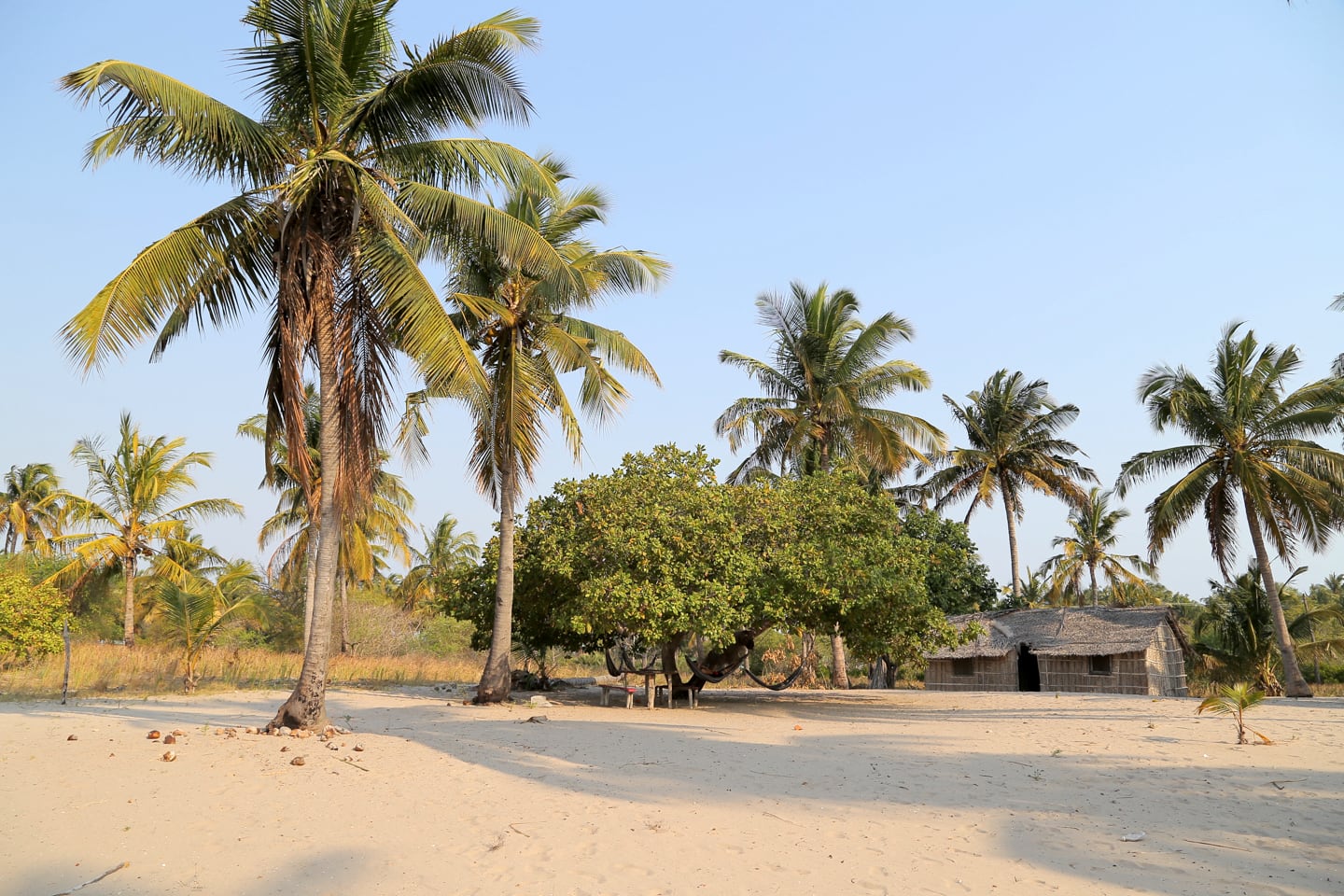
Above is the original backpackers bungalow which has been around for as long as I’ve been coming here. I often stayed in the room on the left-hand side, but in later stays, I stayed in one of Lucio’s own family bungalows before he built the new guest bungalows. A few times, we camped under a camping hut that is no longer around.
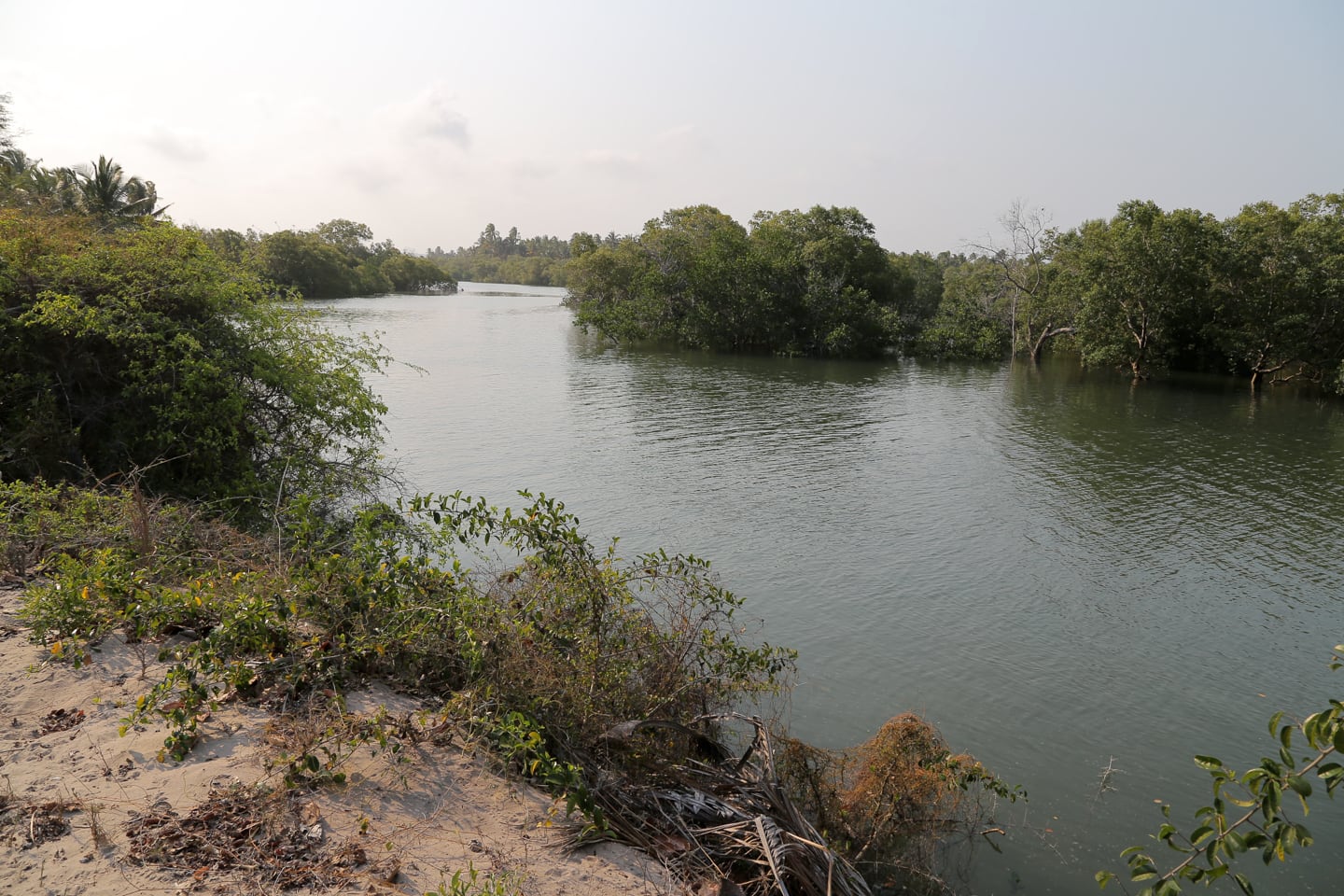
This is the site of the old hammock hut I whiled away my afternoons under. It has since succumbed to erosion, and there are still remnants of the thatch roof scattered about.
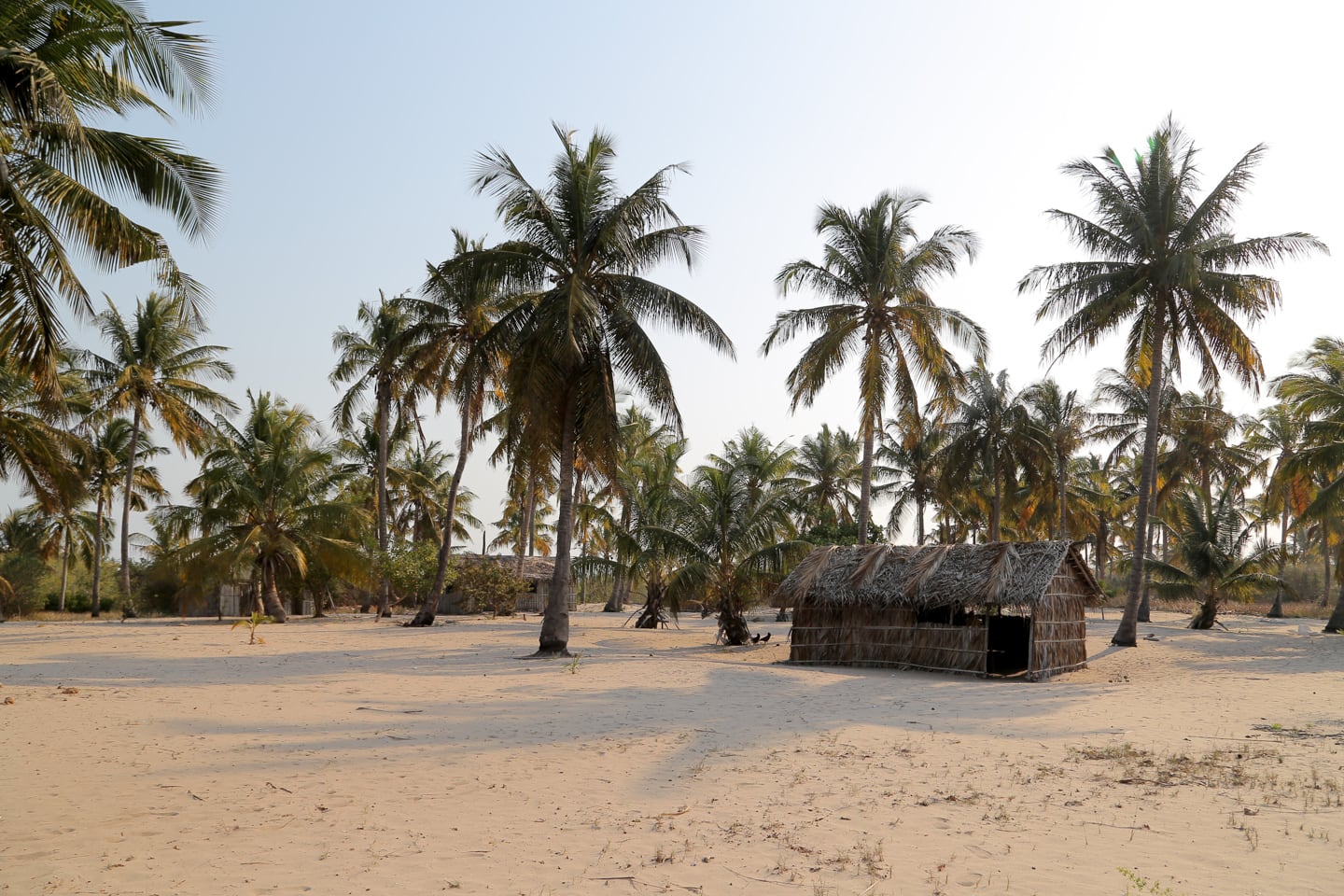
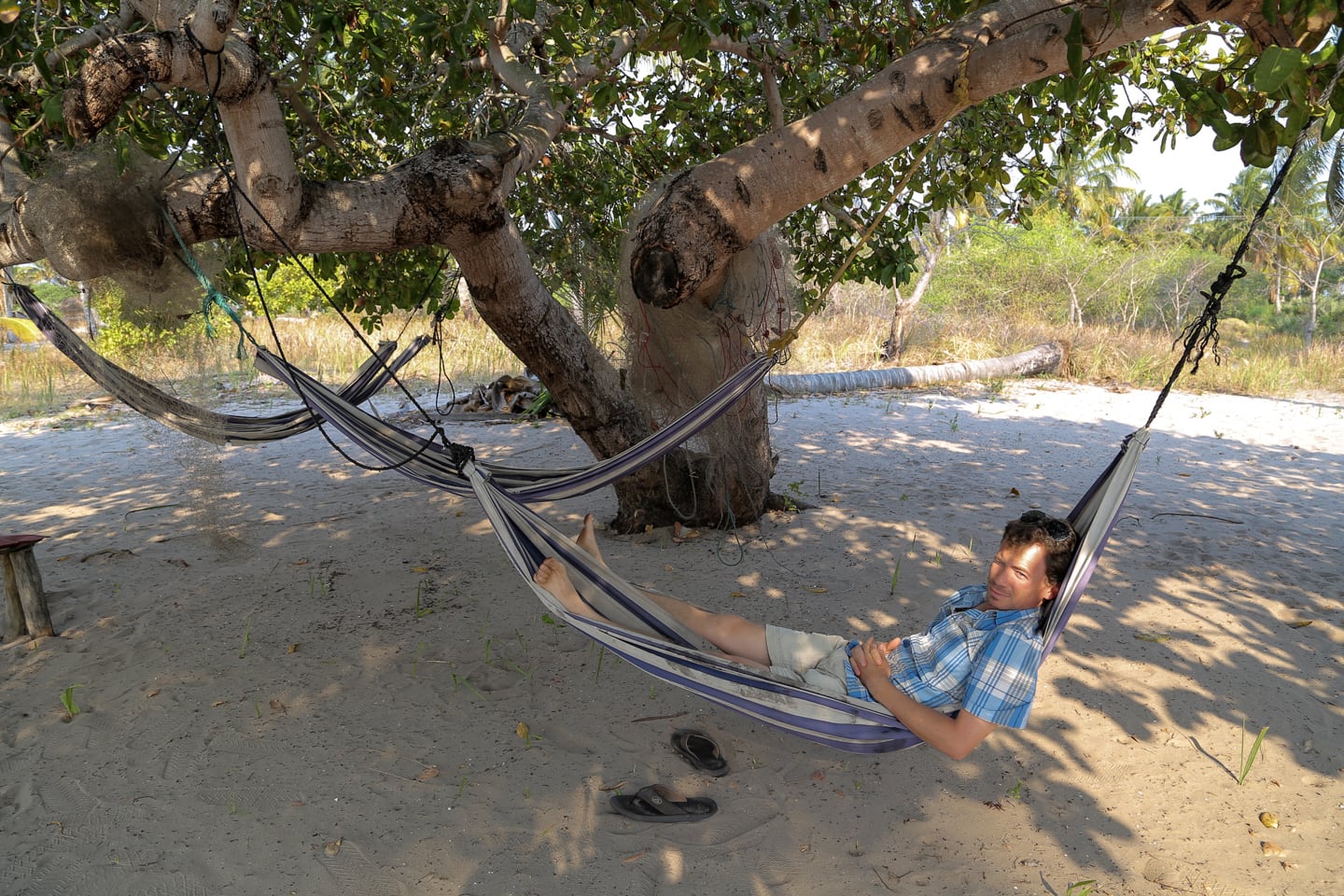
The hammocks were salvaged and moved under this sprawling cashew tree, which, in my opinion was a great move.
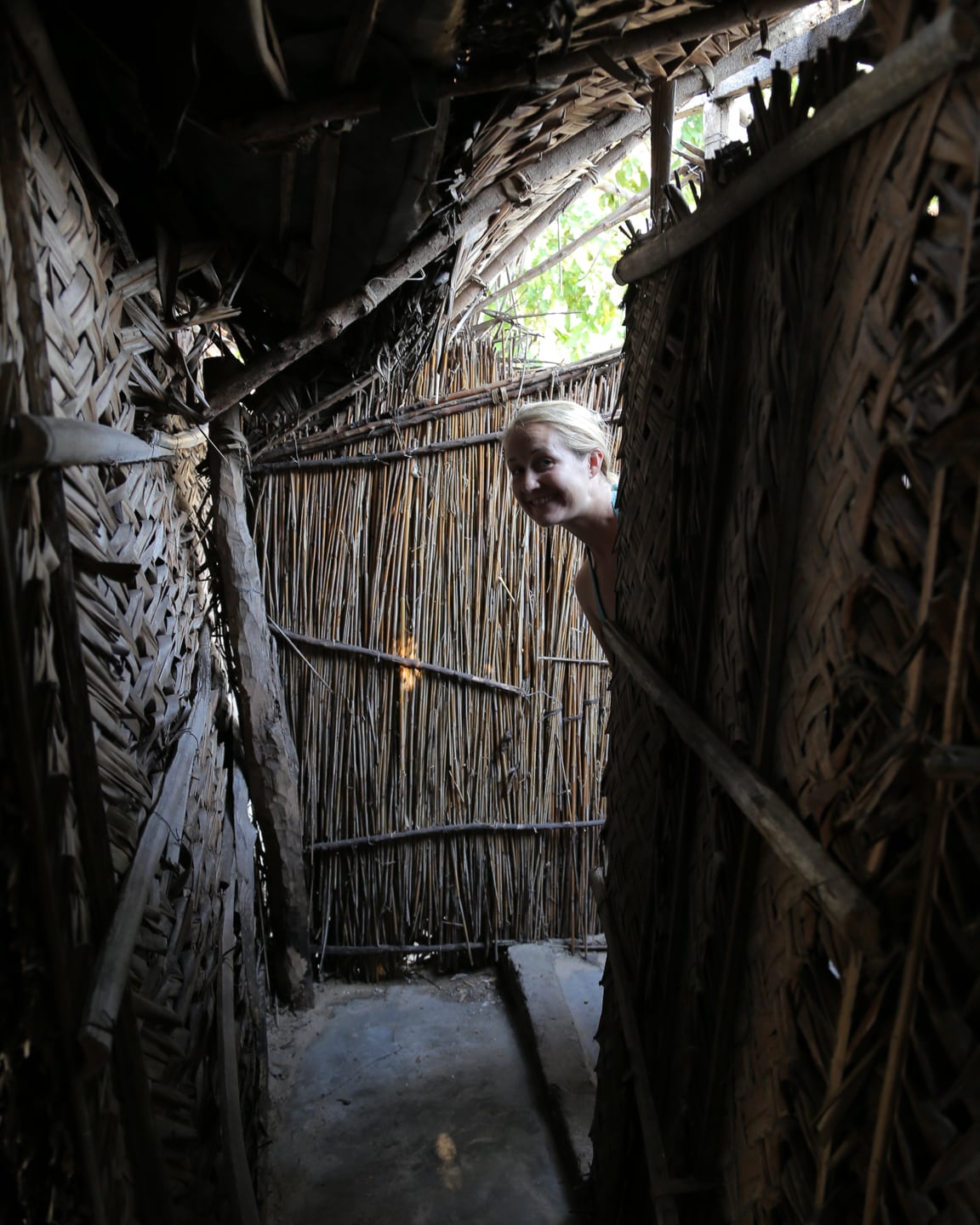
The latrine and casa de banho (bathing room) in the rear of the backpackers bungalow was still there — some great memories of bucket bathing and frantically searching for toilet paper (in those days, newspaper was supplied) for blowing my nose after a first encounter with Lucio’s atomic homemade peri peri powder. I can still remember the burn. Oh the burn. Like a raging ice cream headache that just takes over your entire being and knocks you flat on your butt. Needless to say, I steered well clear of the peri peri powder this time around.
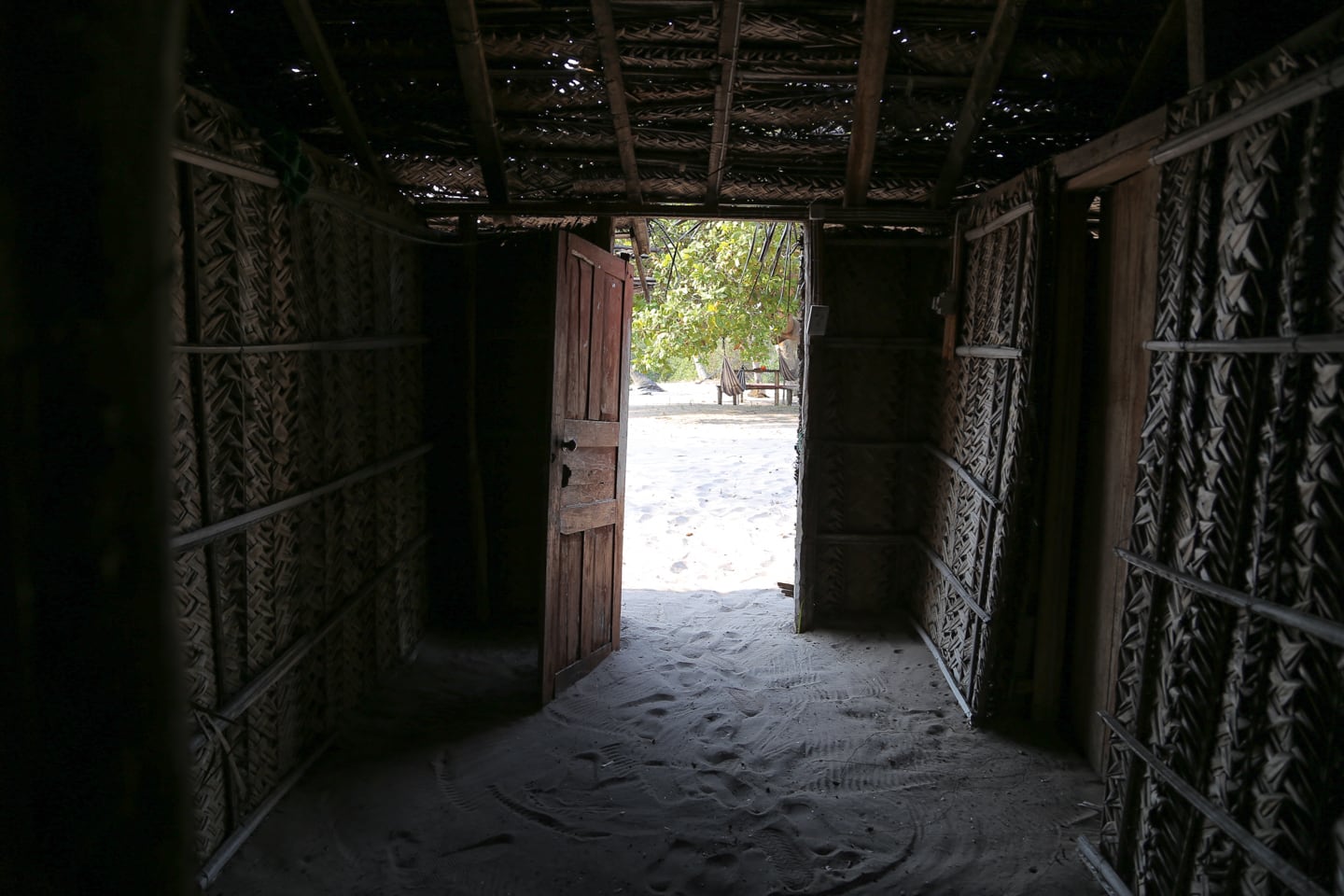
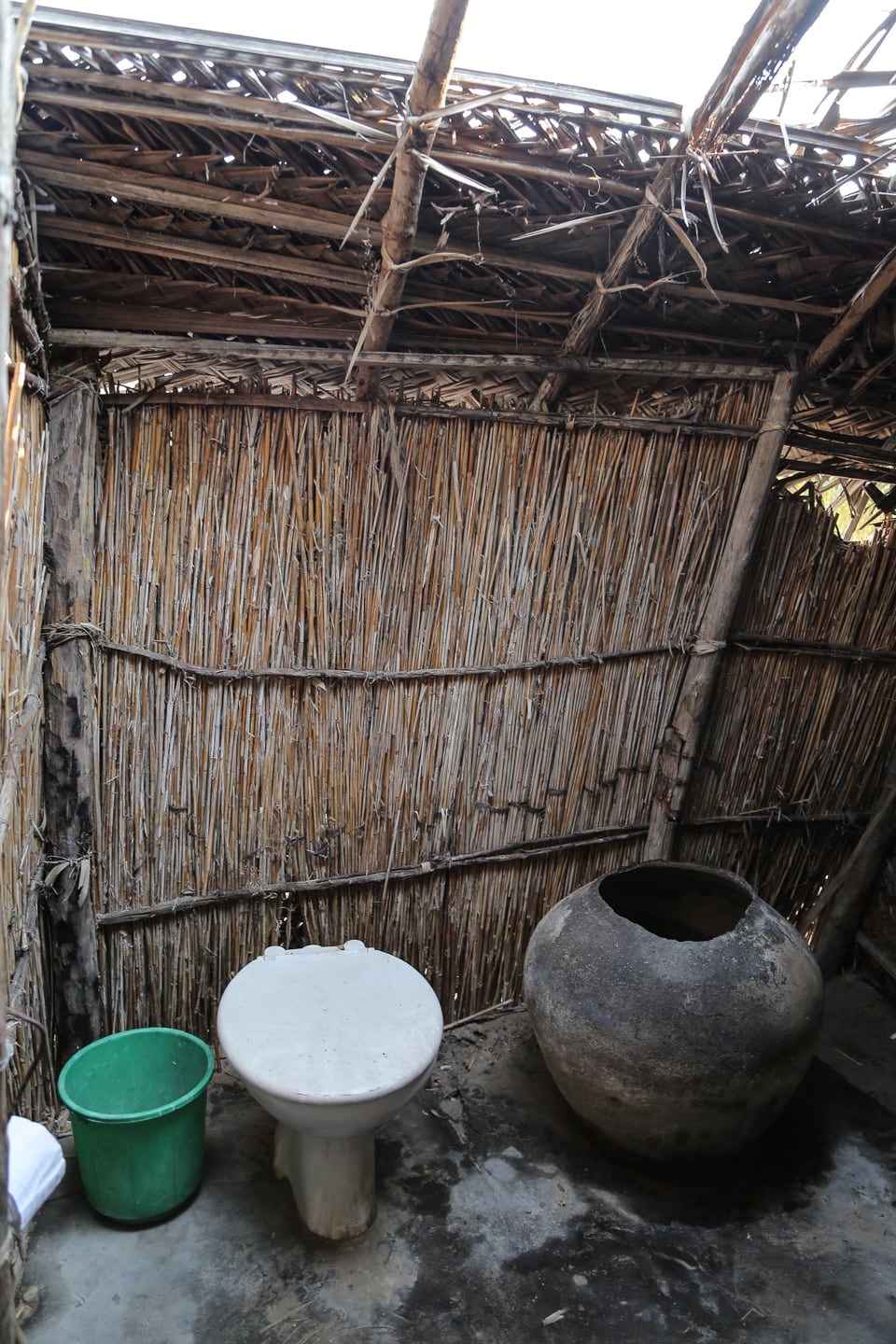
The basic bucket-flush toilet in the bathroom behind the backpackers bungalow.
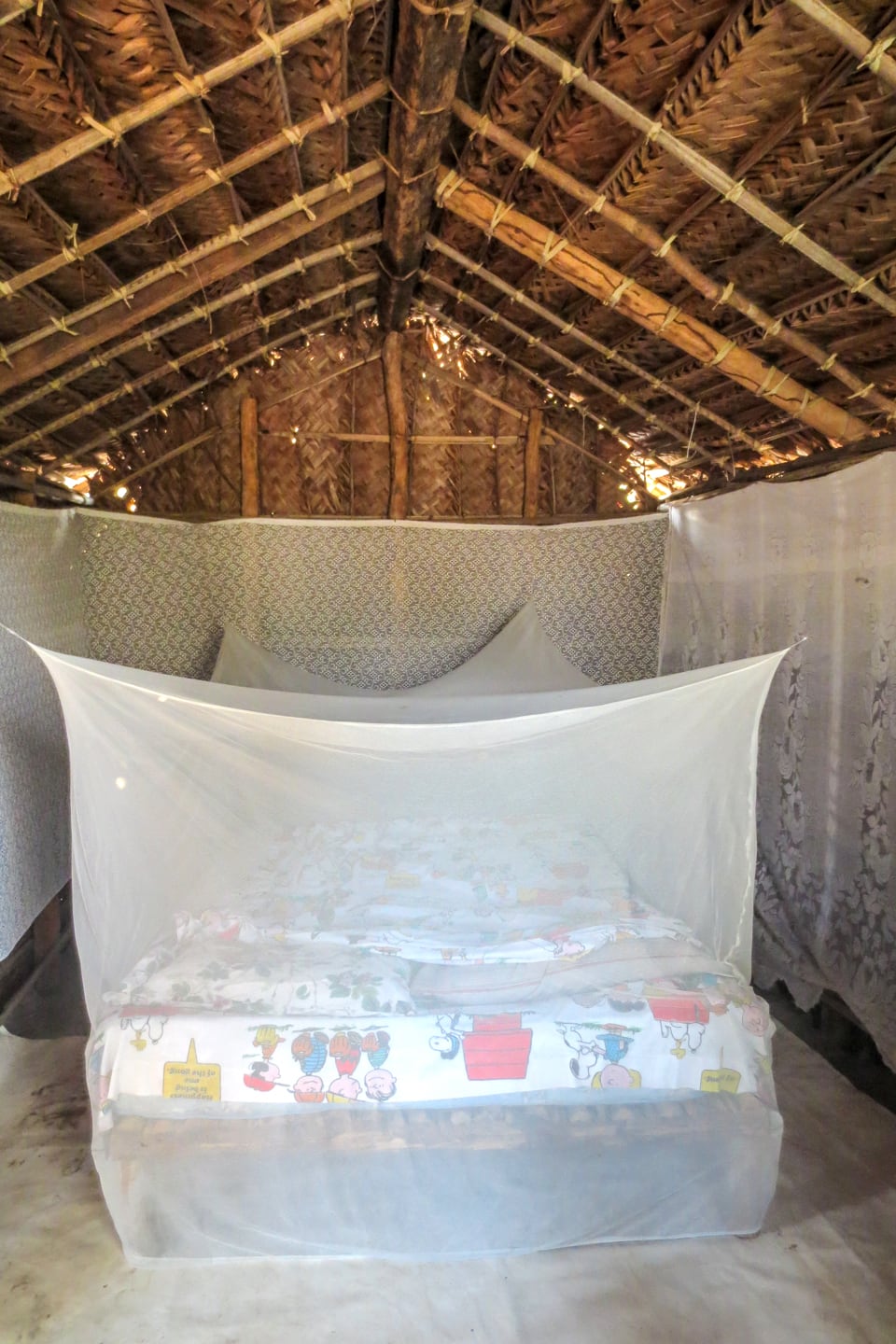
And, above, our digs for the night — lightyears ahead of the backpackers bungalow in comfort and style (concrete, rather than mats on sand; lined walls; mosquito net and a large comfortable bed). It would have been interesting to stay in the old place, for old times sake, with the toilet candle and everything, but the new digs offered a goodnight sleep and a degree of security that the old place hadn’t, which was welcome.
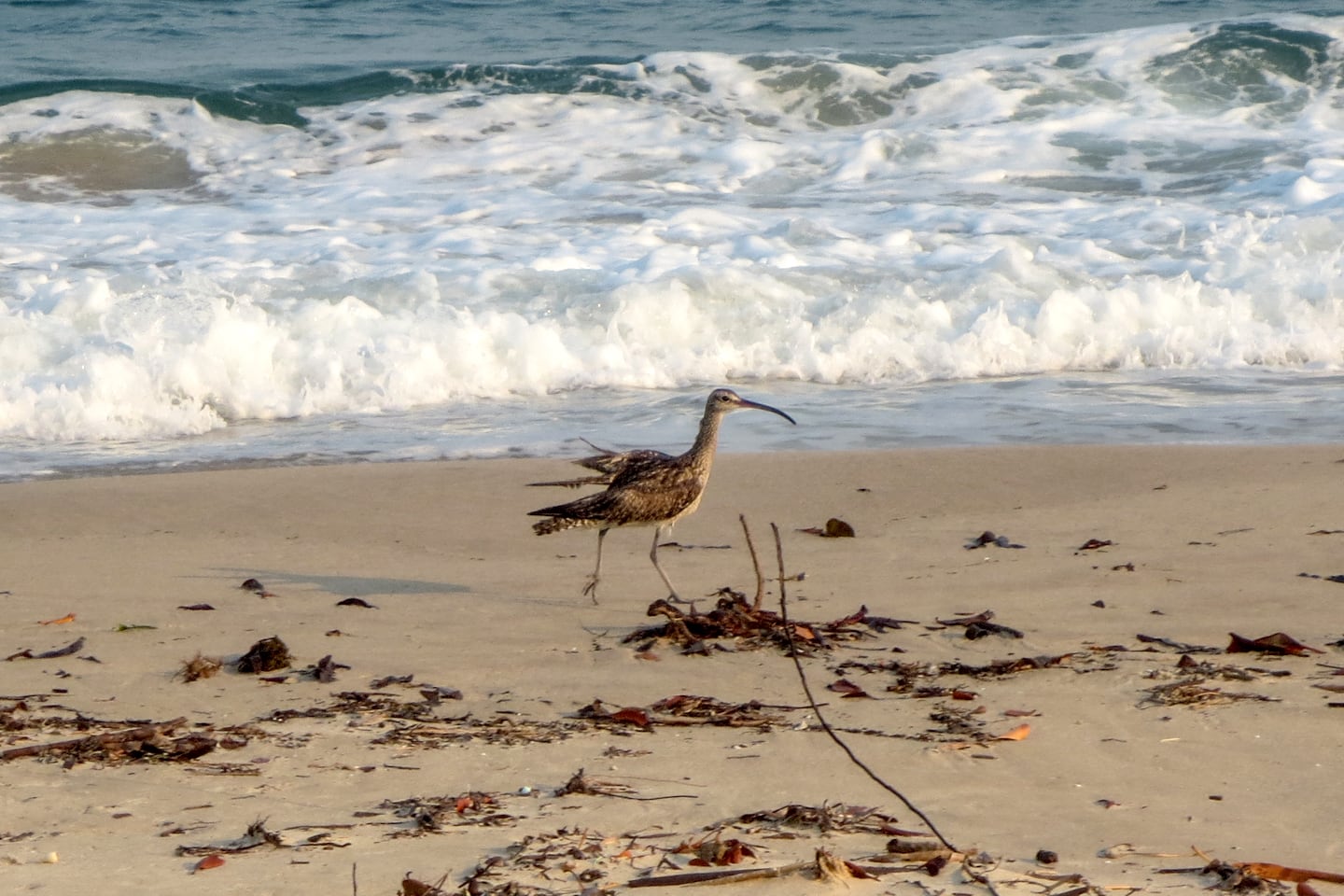
Back at the beach, the tide is coming back in, along with a number of Ibis.
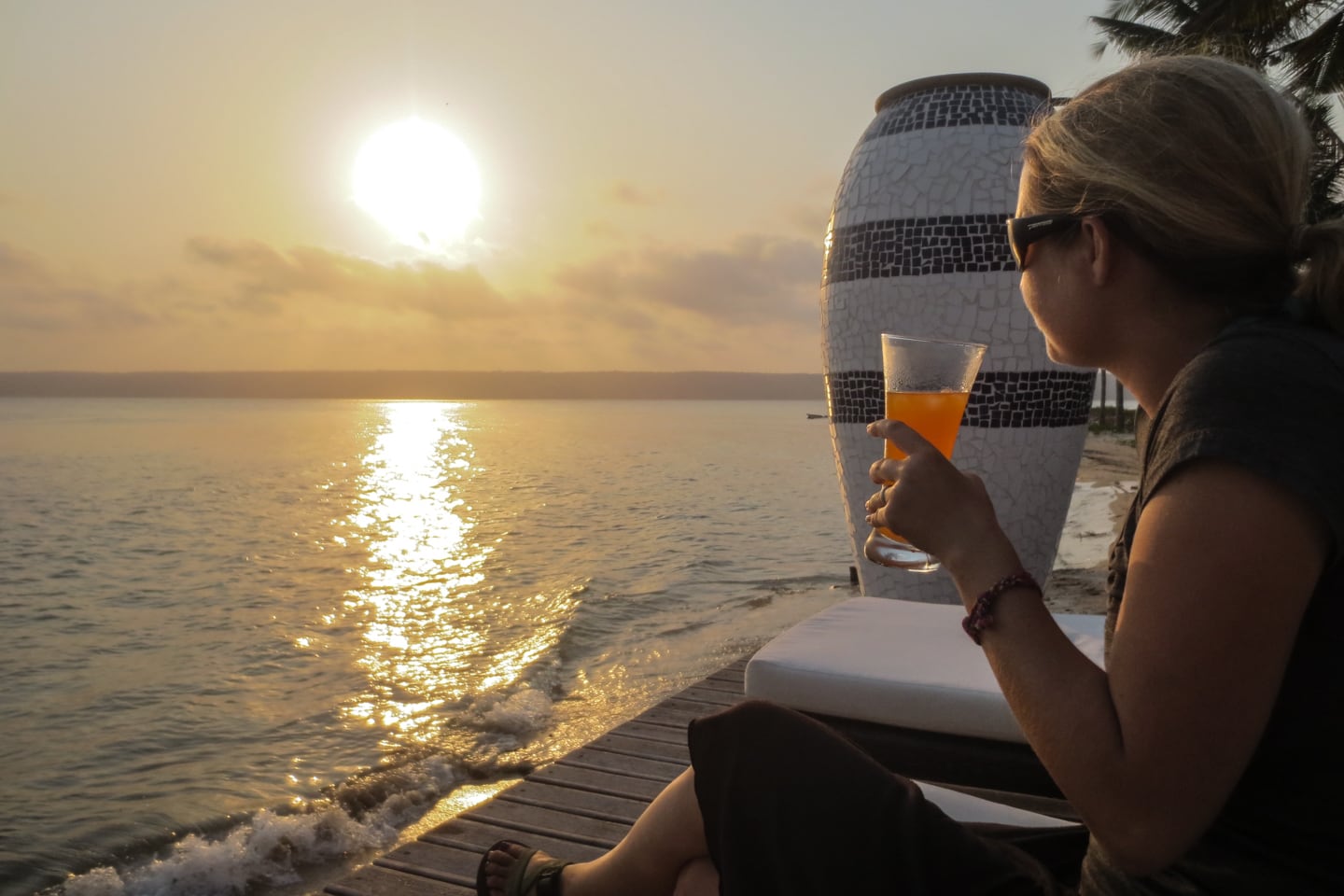
We decide to head over to one of the lodges on the sunset side of the point to have a drink, but find we only have enough money on us for two Orange Fantas — Resort prices in this rural community…feels wrong. But the sunset is magnificent.
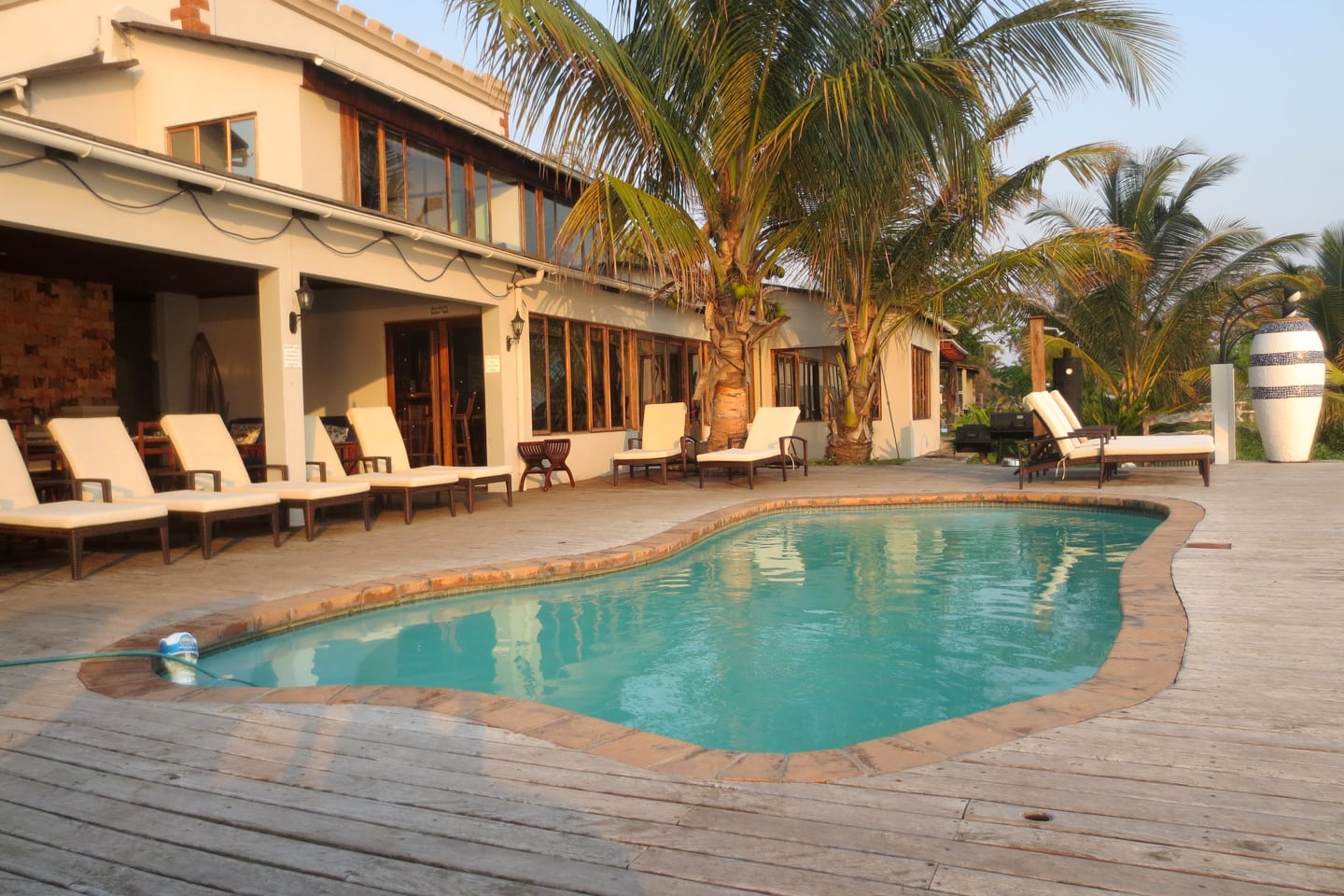
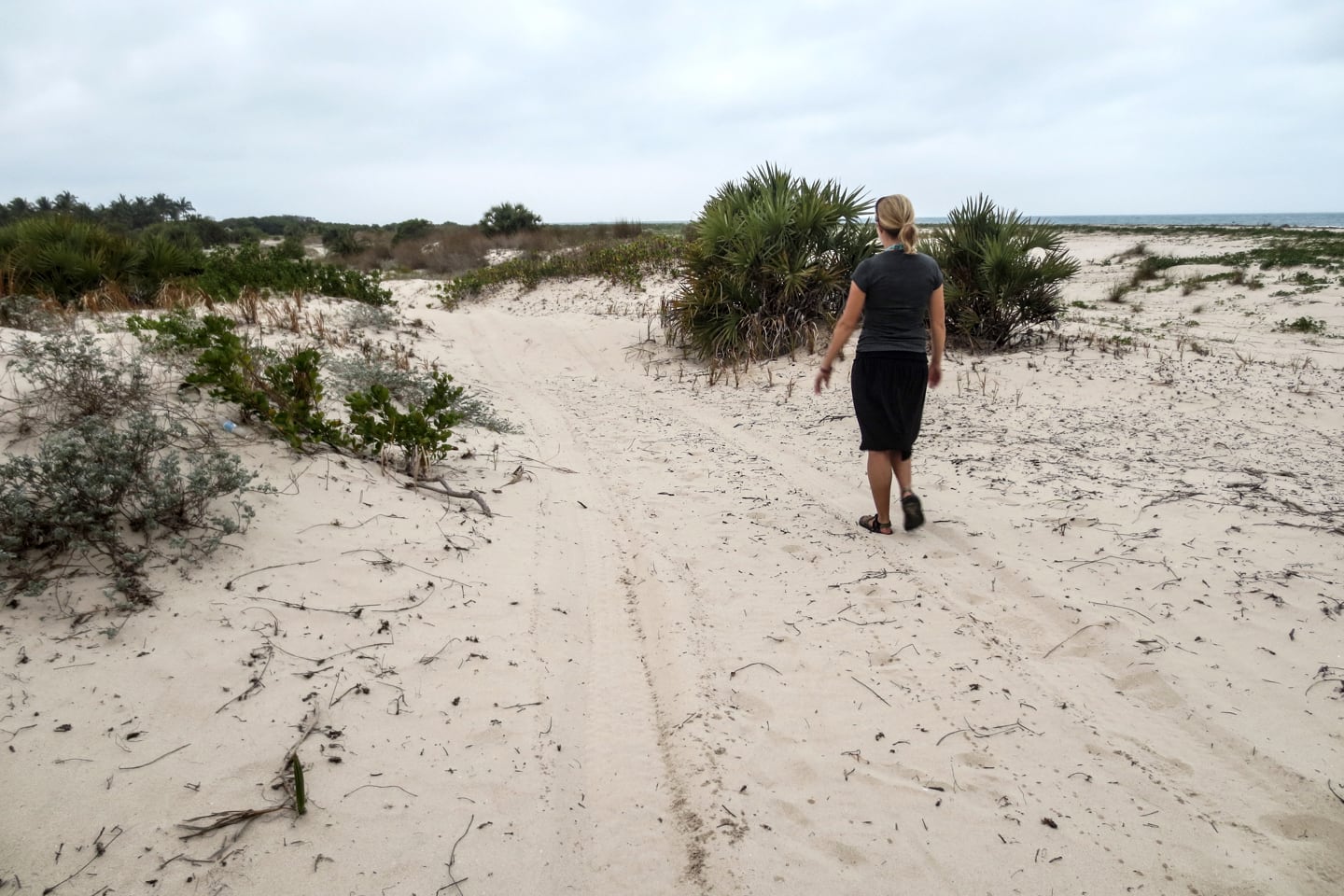
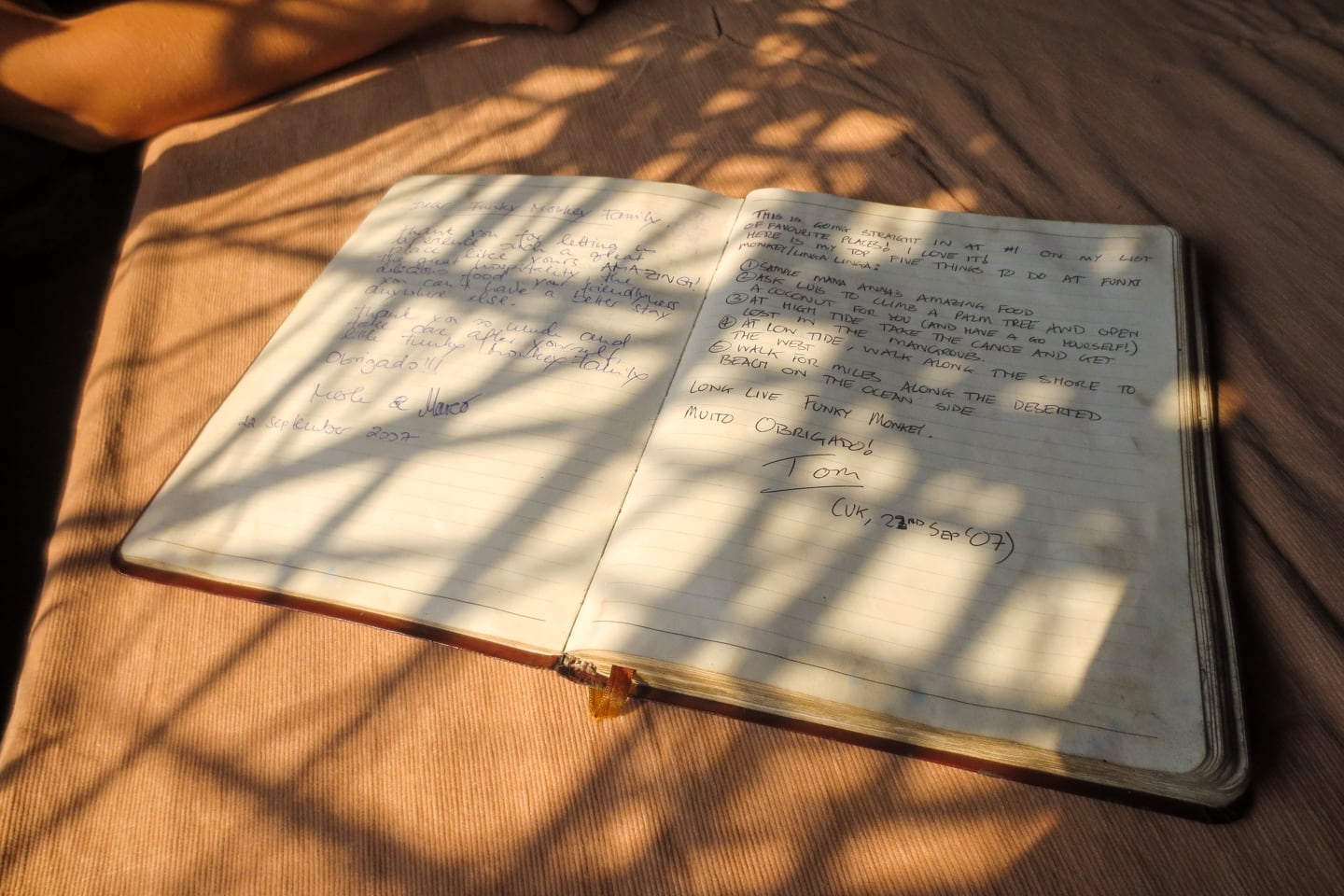
When I left Morrumbene eight years ago, I left a leather-bound guestbook and large map my parents had sent me from the States with one of Lucio’s wives. For years I had been curious as to whether the two ever made it to him. Sure enough, on arrival, we saw the well-used guestbook. At first, Lucio didn’t put two and two together, but quickly remembered the circumstances in which he had received the book and that that had been me. I always thought he could benefit from a proper guestbook and world map, which were impossible to get ahold of at the time, and sure enough he had. I was surprised, however, to discover I hadn’t written anything in it, so I moved to rectify that quickly.
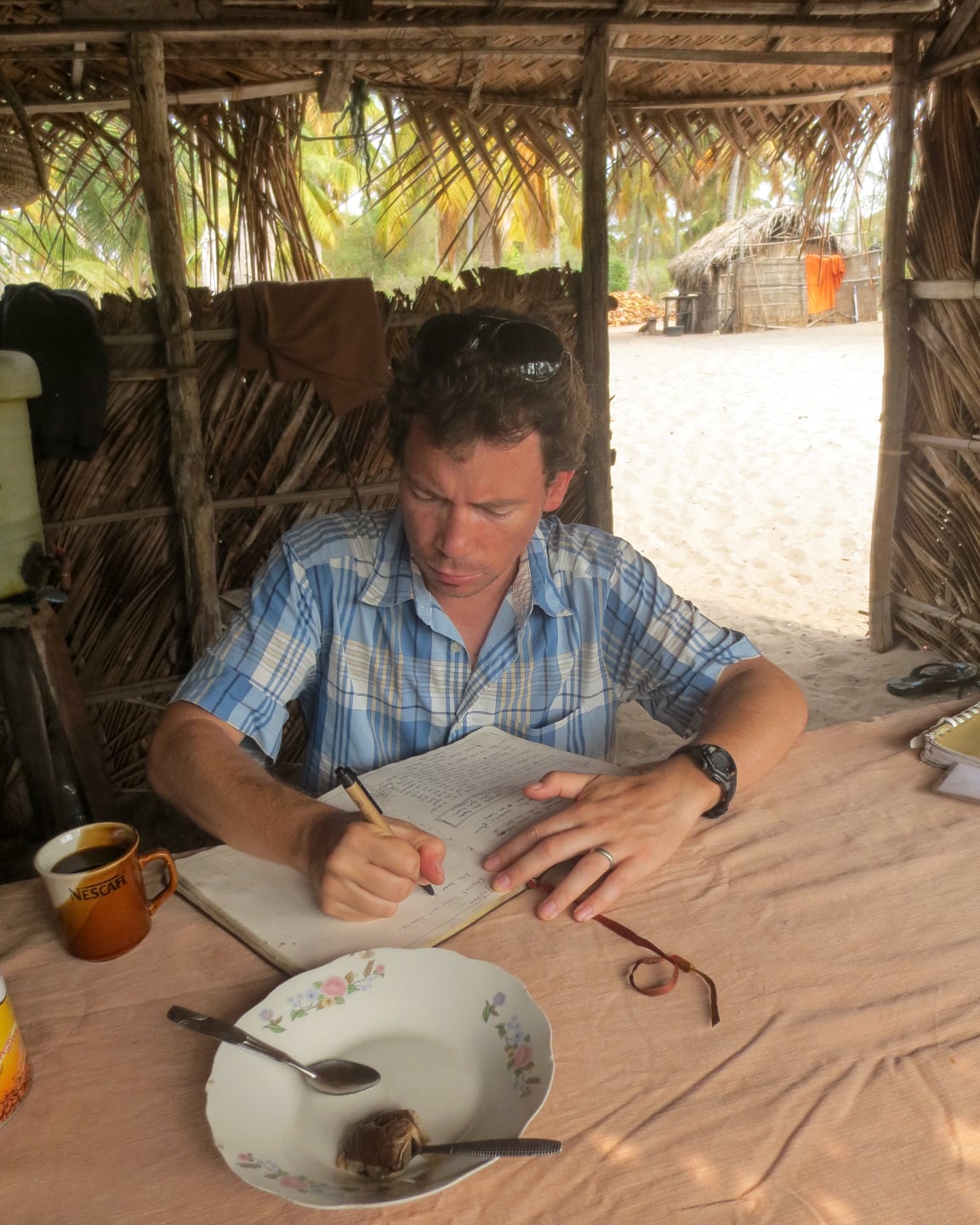
Sadly, Lucio’s business had dropped off considerably in the past few years, due to a number of reasons. Primary among them has been the instability Mozambique has experience, or rather, the worldwide reporting of it. In fact, Lori and I were unsure as to whether we’d even be able to travel to Mozambique this fall or how far north we’d be able to travel. As recently as a few months prior to our arrival, guerrilla forces had been regularly ambushing public buses and armed convoys moving up the EN-1 between Vilankulo and Beira — more specifically, the Rio Save and Muxungue. Fortunately for us, just weeks before our arrival in Africa, a peace agreement had been signed, and that seemed to do the trick. However, we would be traveling right through the heart of the conflict zone in the week leading up to the national elections. Certainly not the most idea scenario, but the peace agreement was certainly a good sign.
However, the conflict had had a huge impact on tourism in Mozambique. So much, in fact, that, here in October, we were Lucio’s first guest of 2014. Yet, Lucio remained optimistic that guests would return in time — so much, in fact, that he had just completed several new bungalows and was toying with using Facebook to get the word out.
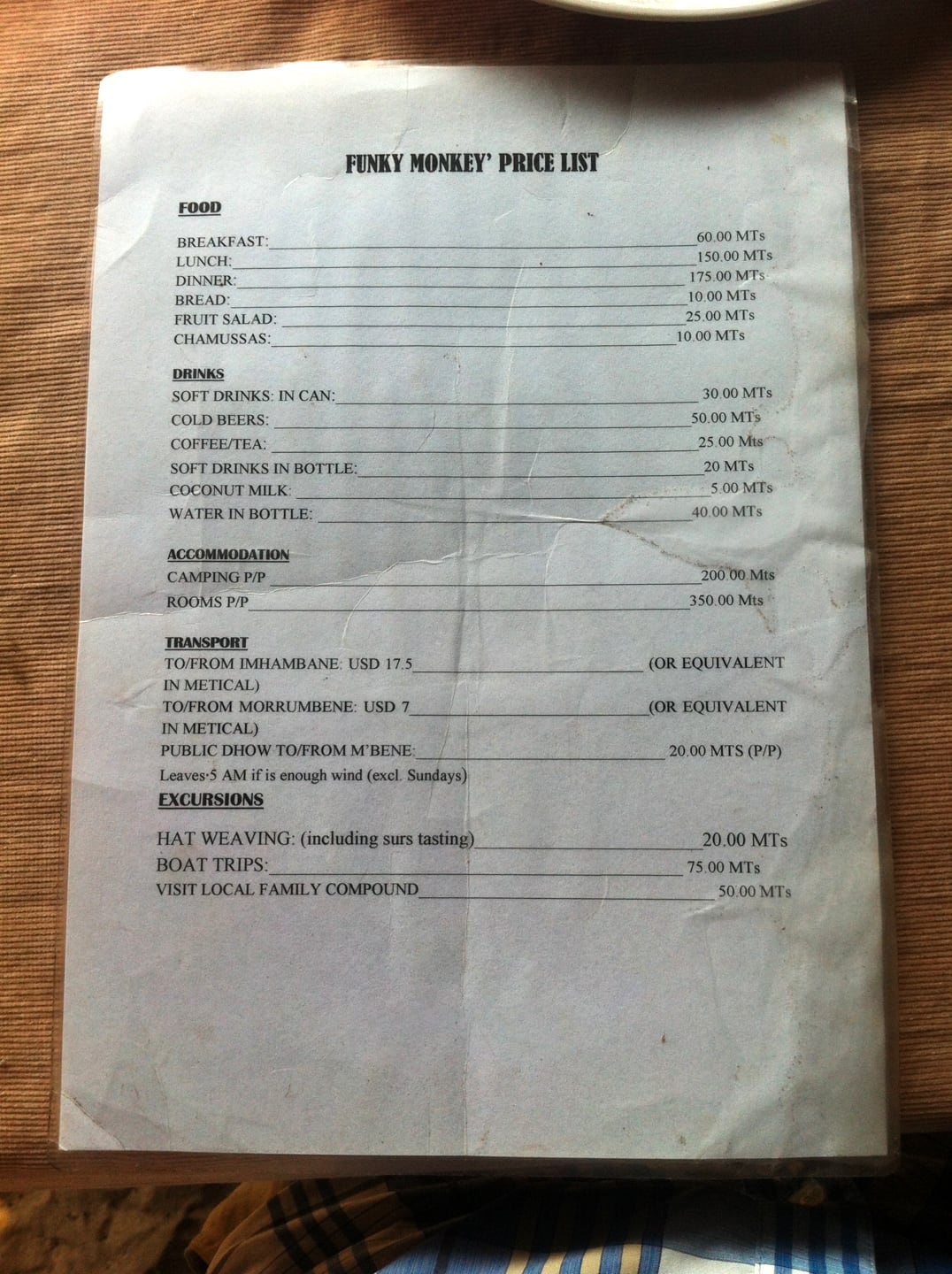
For those of you interested in making the trip out, here’s a bit of info. Above is the current price list (as of October 2014), which is certainly subject to change — prices are in Meticais (October 2014 exchange rate is about 31 MTs per US$1). If you’d like to book something with Lucio at Funky Monkey, the number is country code: 258, phone: 82-836-2090. His daughter, Sakina, was fielding his calls when we reserved, so don’t be surprised if you don’t get Lucio himself. Also, it definitely pays to arrange boat transport ahead of time through Lucio or his daughter. And remember to bring plenty of cash (Mozambican Meticais) as there are no ATMs on the point — though there is a brand new ATM in Morrumbene town!
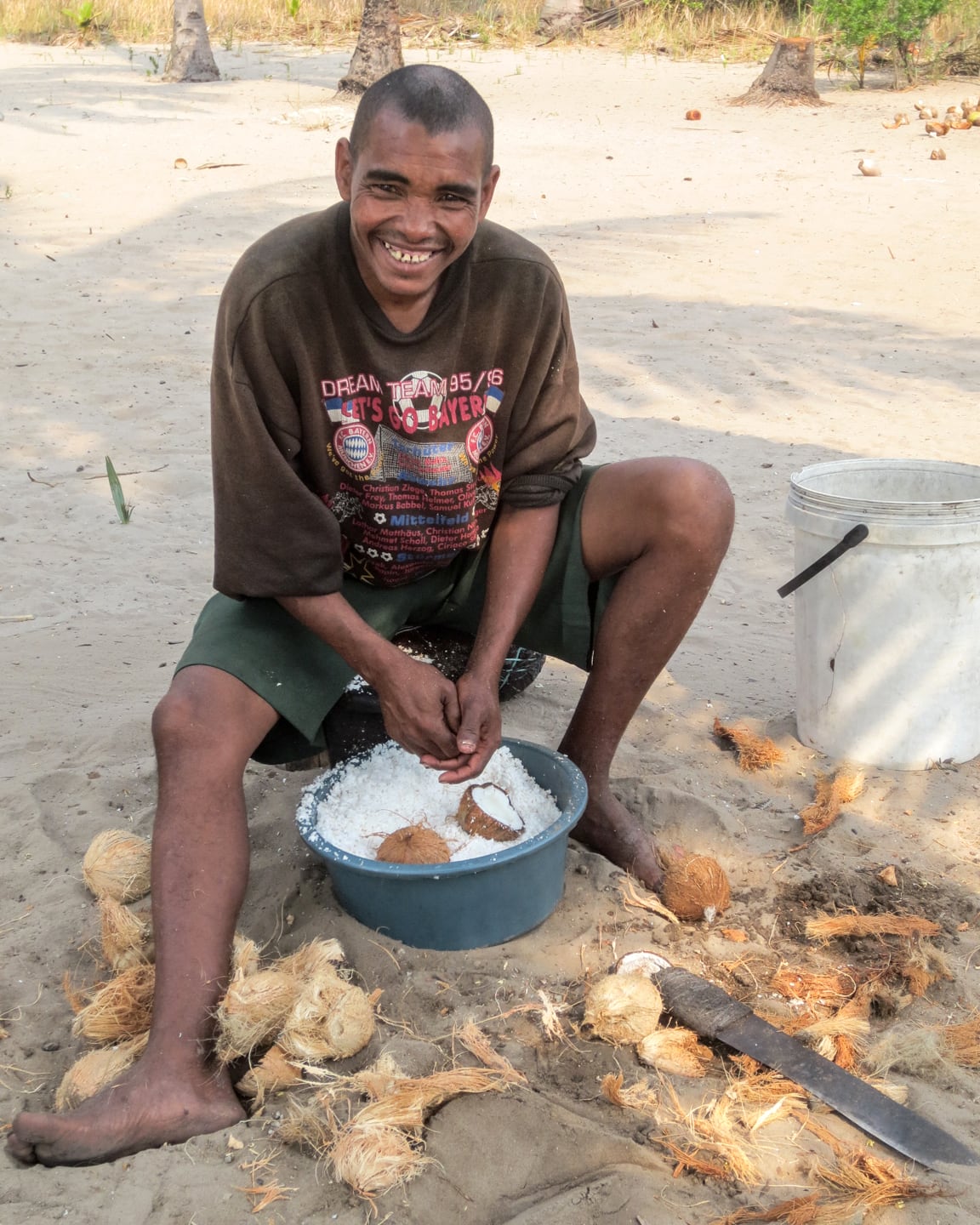
One of Lucio’s helpers grating coconut, the traditional way.
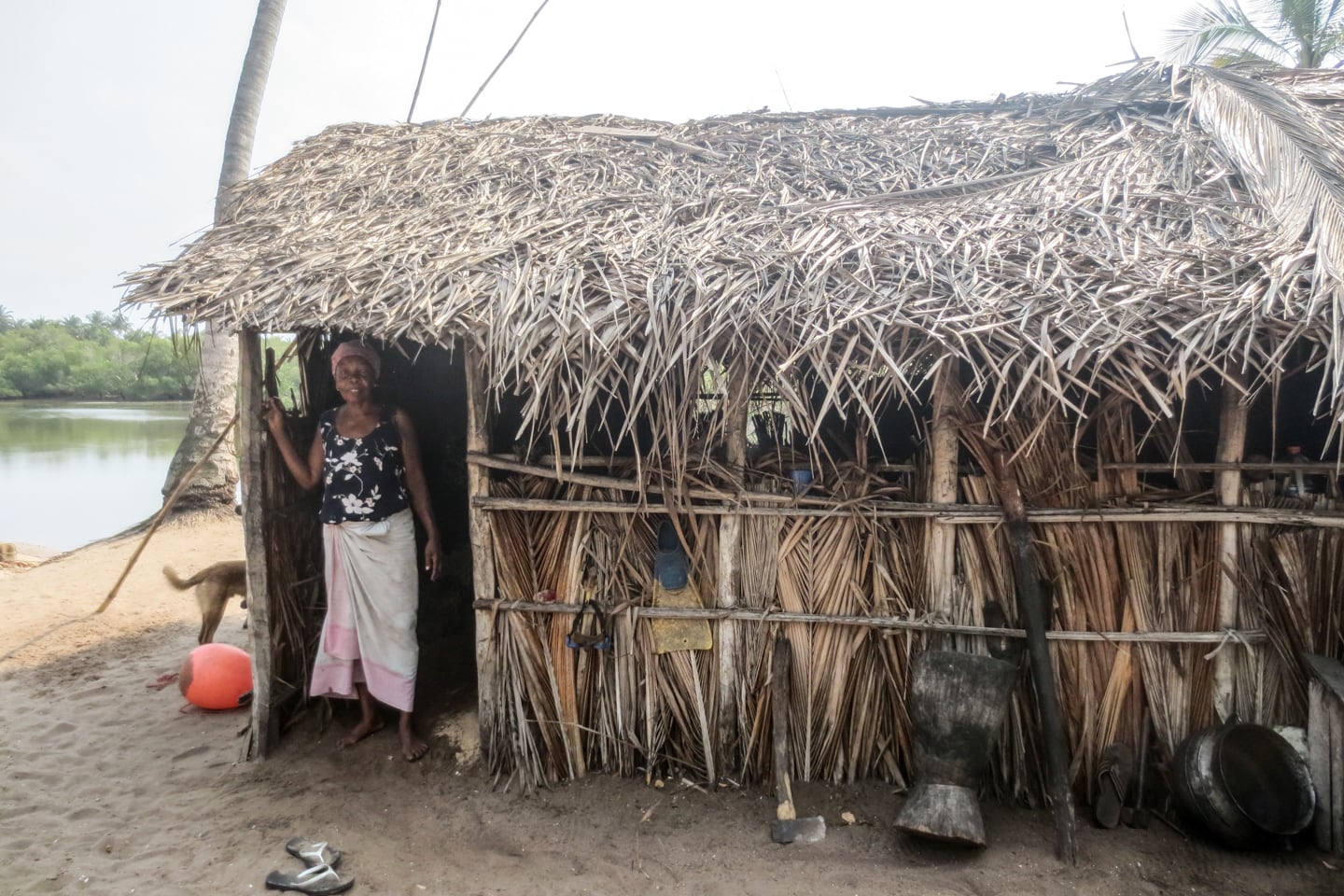
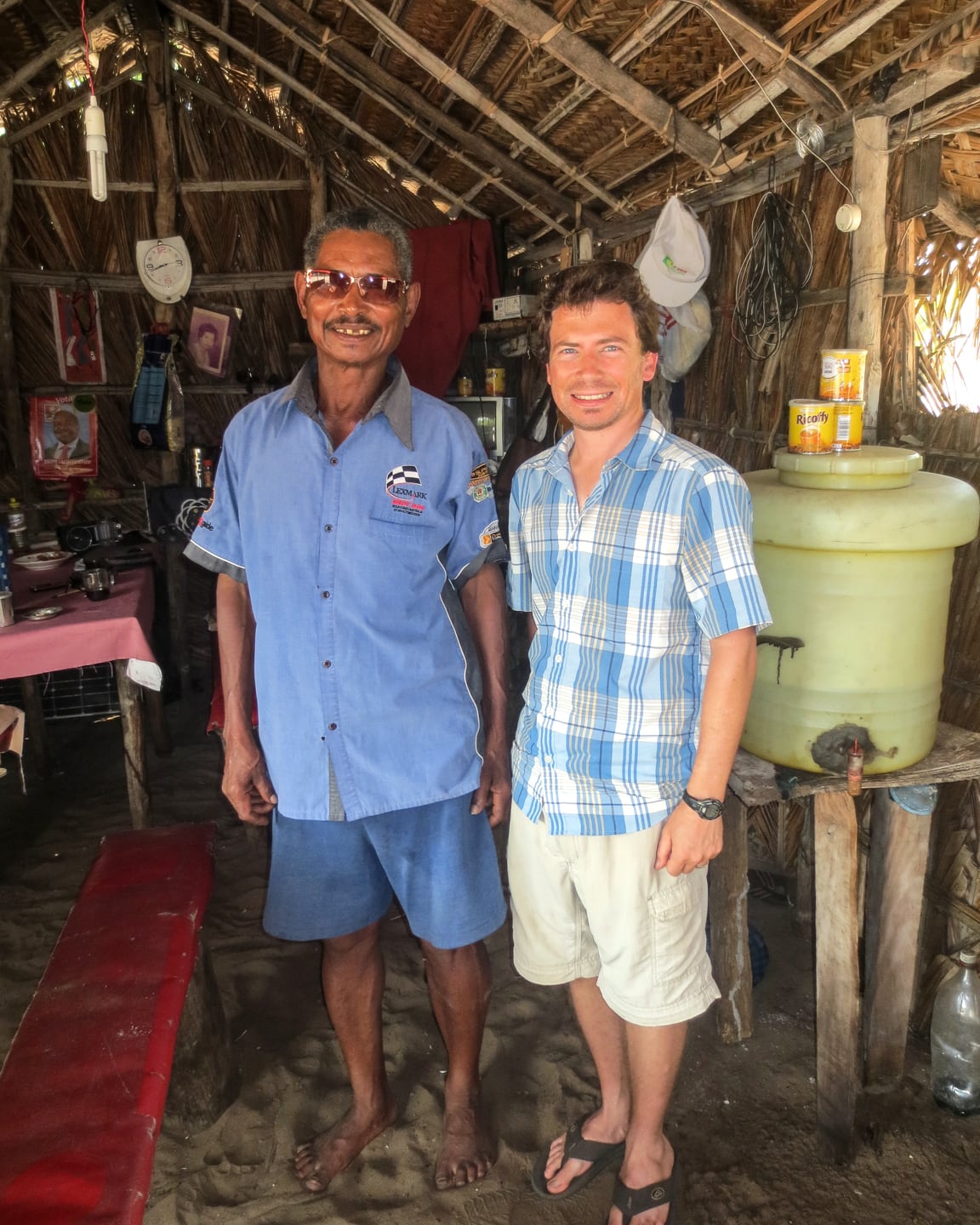
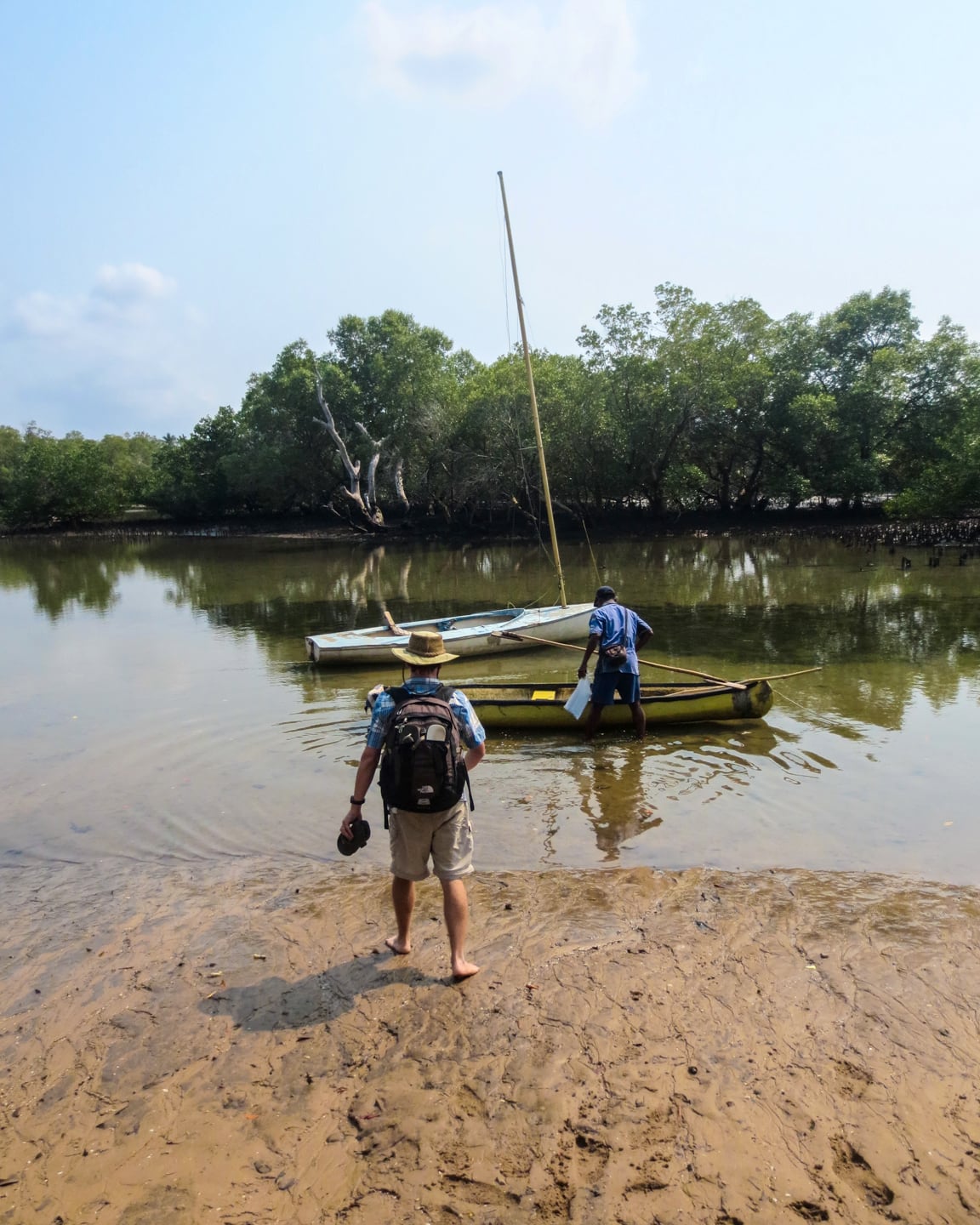
And with that, we were off. It’s amazing how quickly three days, two nights flies by on Linga Linga. You’d never think they would, but they always seem to. On our trip from Morrumbene, the problem was too much wind. On the morning we left, however, the problem was just the opposite: Lack of wind…zip, zero, zilch. Under these conditions, Lucio suggested we climb aboard his canoe and make the trip across the bay to a village just north of Maxixe, where we would catch a chapa (shared taxi) back to Maxixe. With no wind, the alternative was waking up at 5am and taking a dhow (traditional sailboat) back to the Morrumbene pier which would most certainly take many hours and still leave us the travel all the way to Tofo. As much as we would have liked just a little more time in Morrumbene, we realized this would not really be possible and agreed to have Lucio take us across in the canoe, which was an adventure in itself.
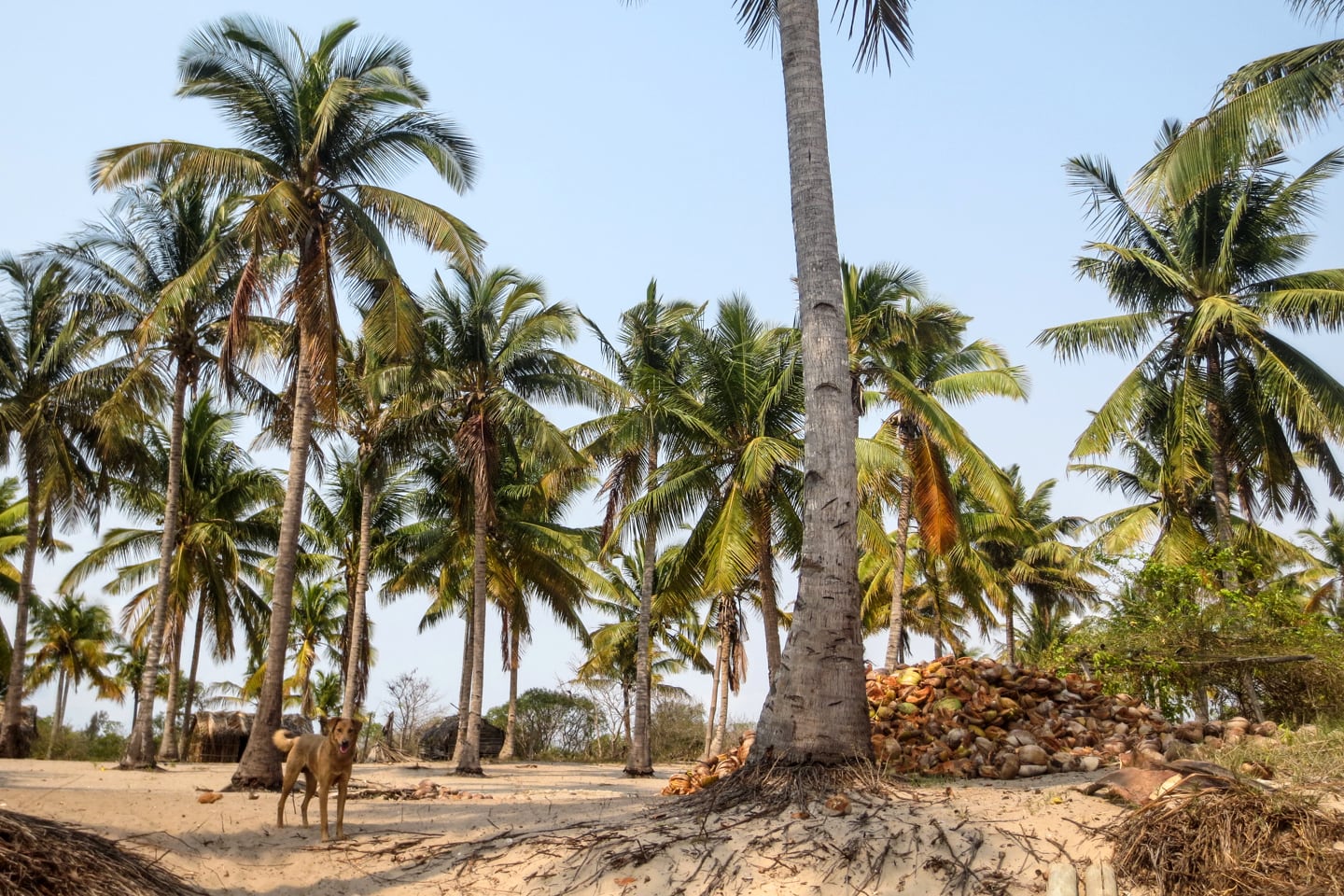
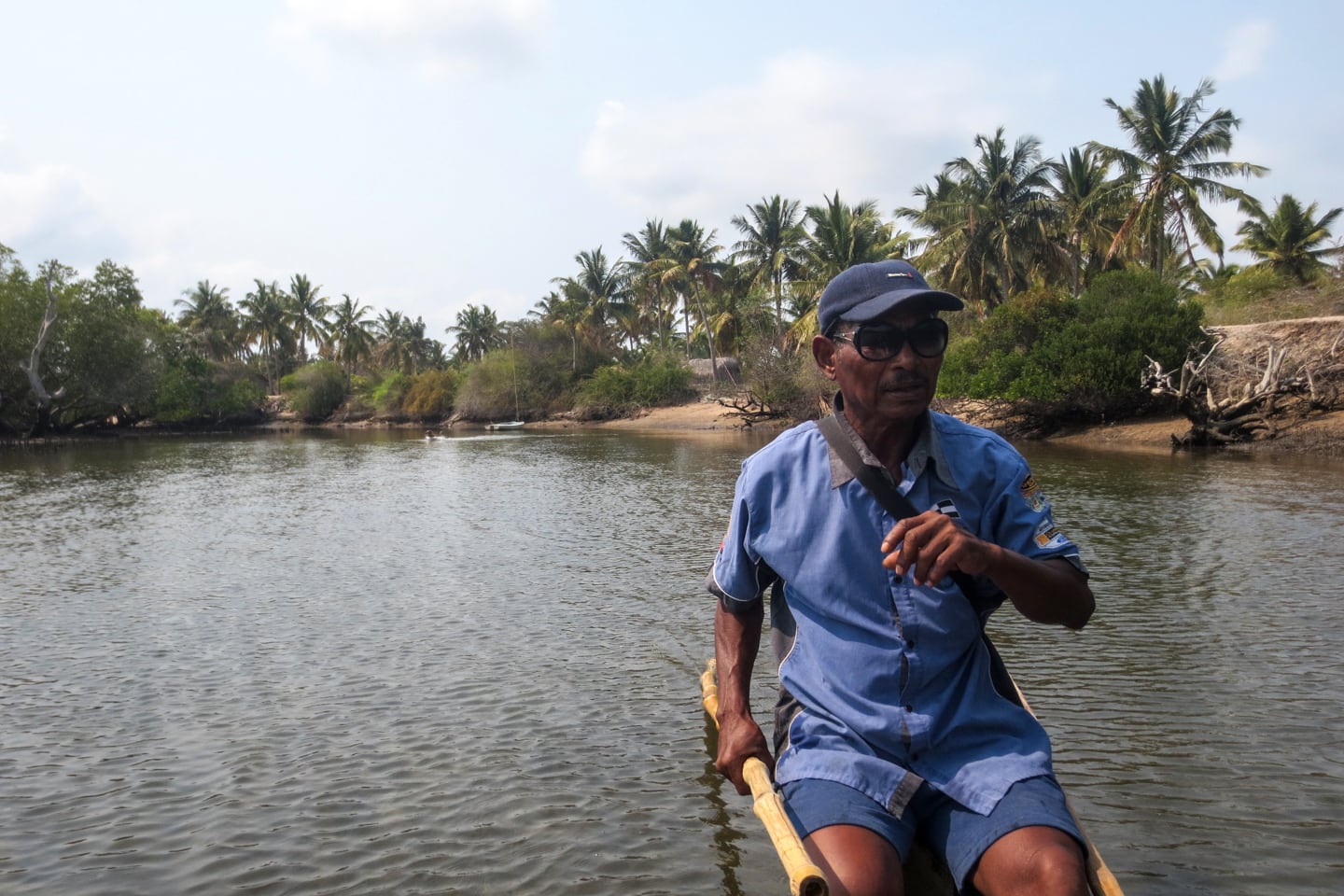
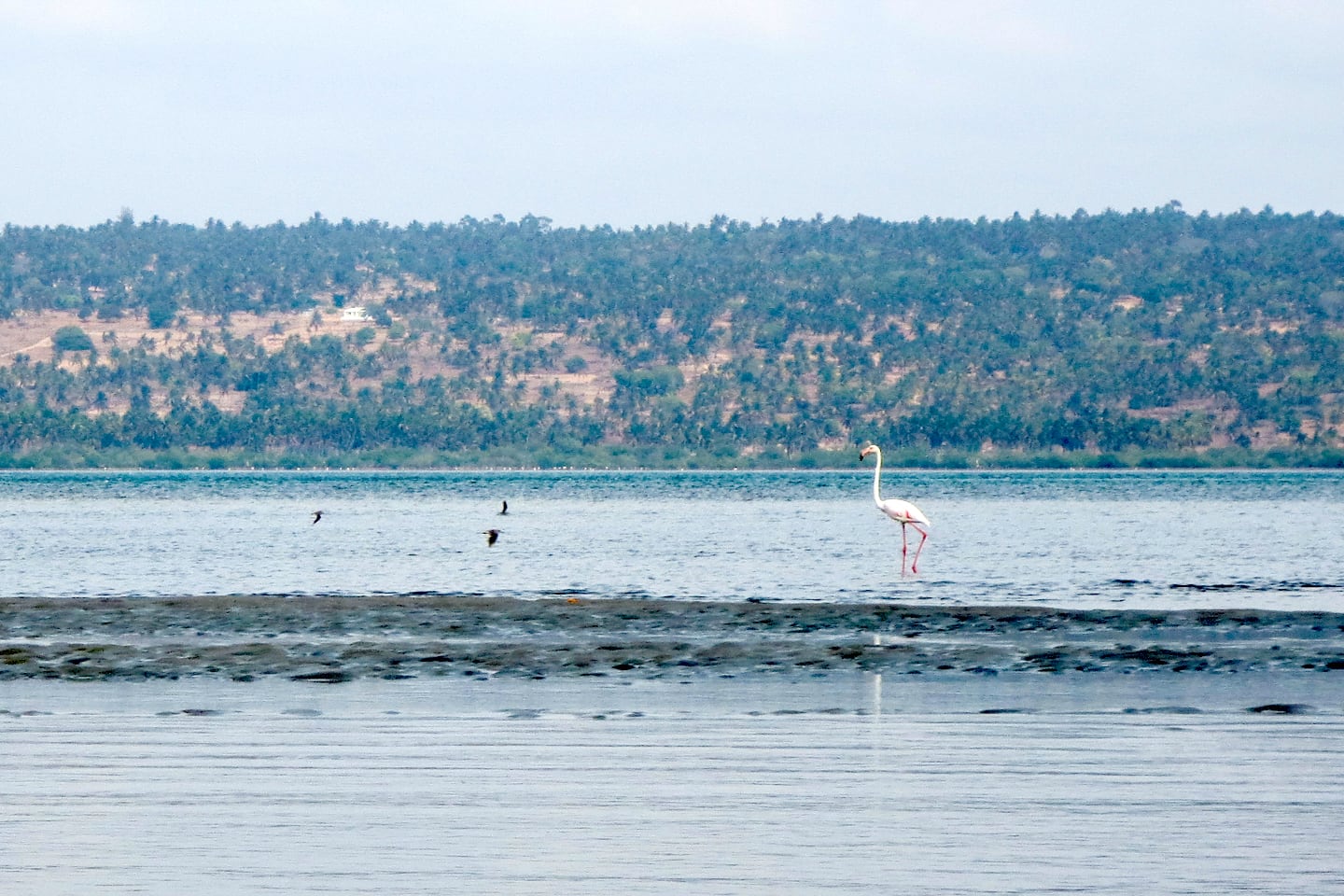
Lori finally got to see her flamingos prancing around in the low tide wetlands…
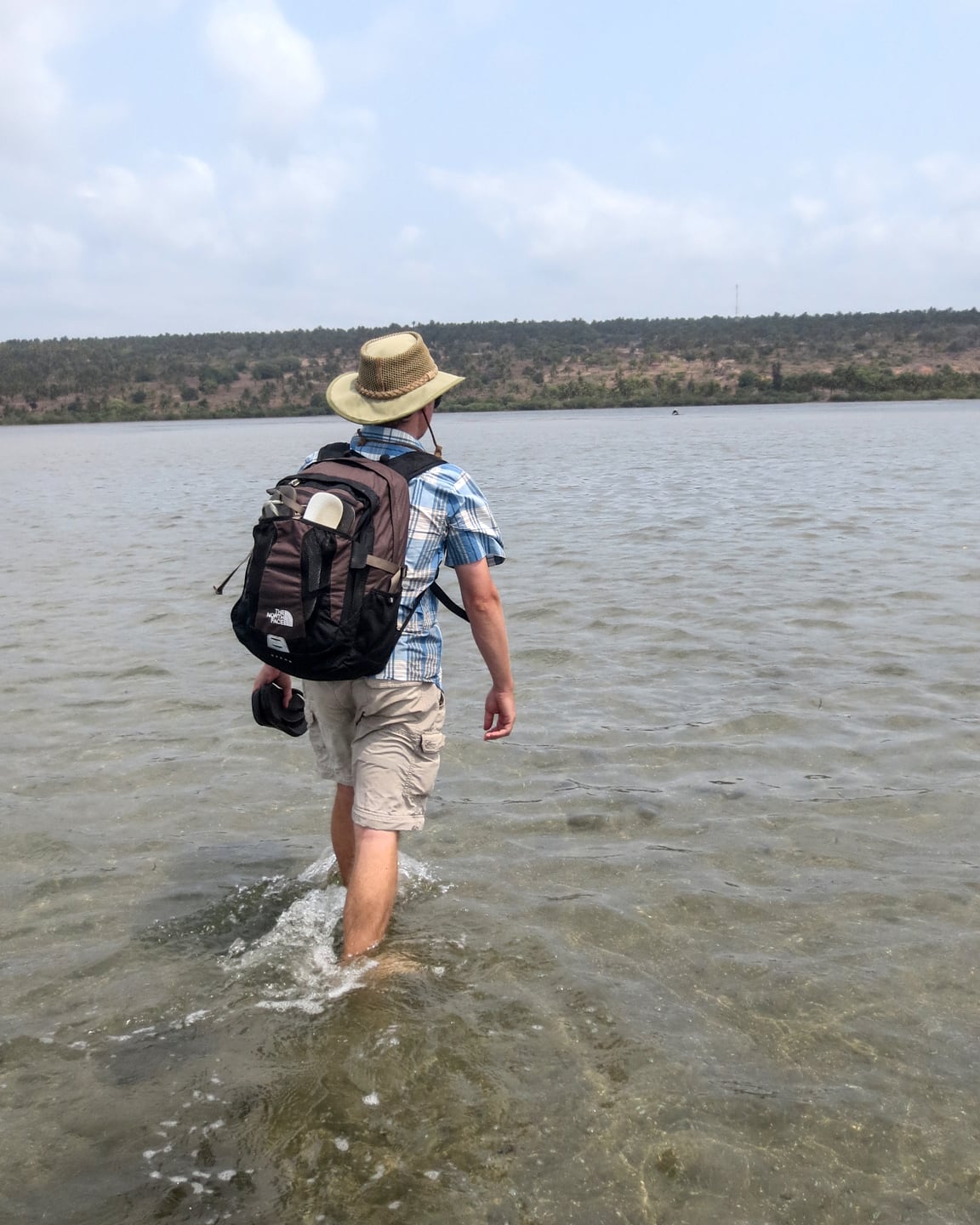
…and also got to experience the classic Linga Linga low-tide stroll. Lucio had taken us as far as the canoe would go. It was up to us to cover the last kilometer on foot through the swampy, silty, estuarine bank.
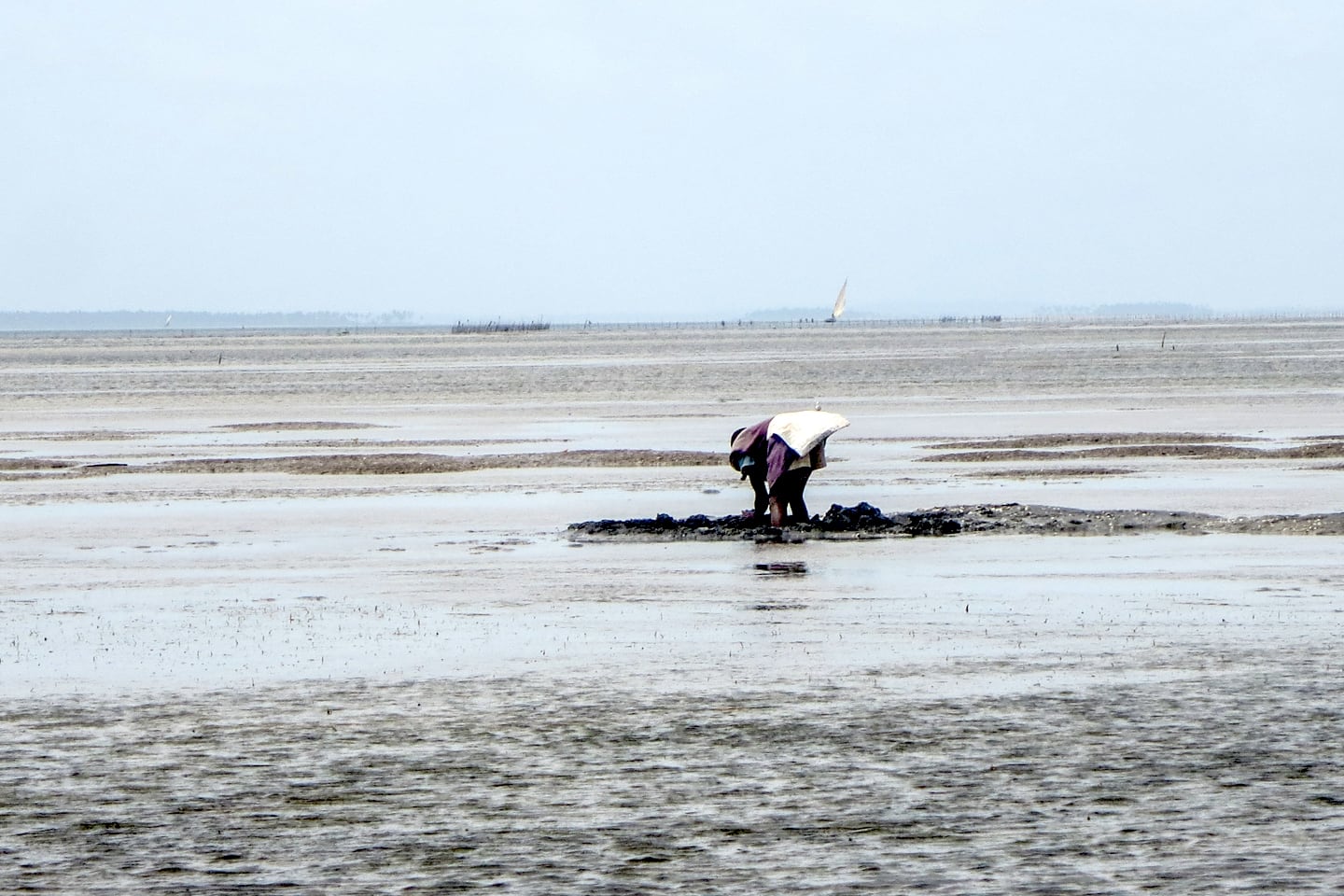
When we finally reached the other side, we bid farewell to Lucio, who had to get back across before the tide came back in. Lucio hooked us up with this woman (below) who made sure we found our way to the village and got on to the correct chapa.
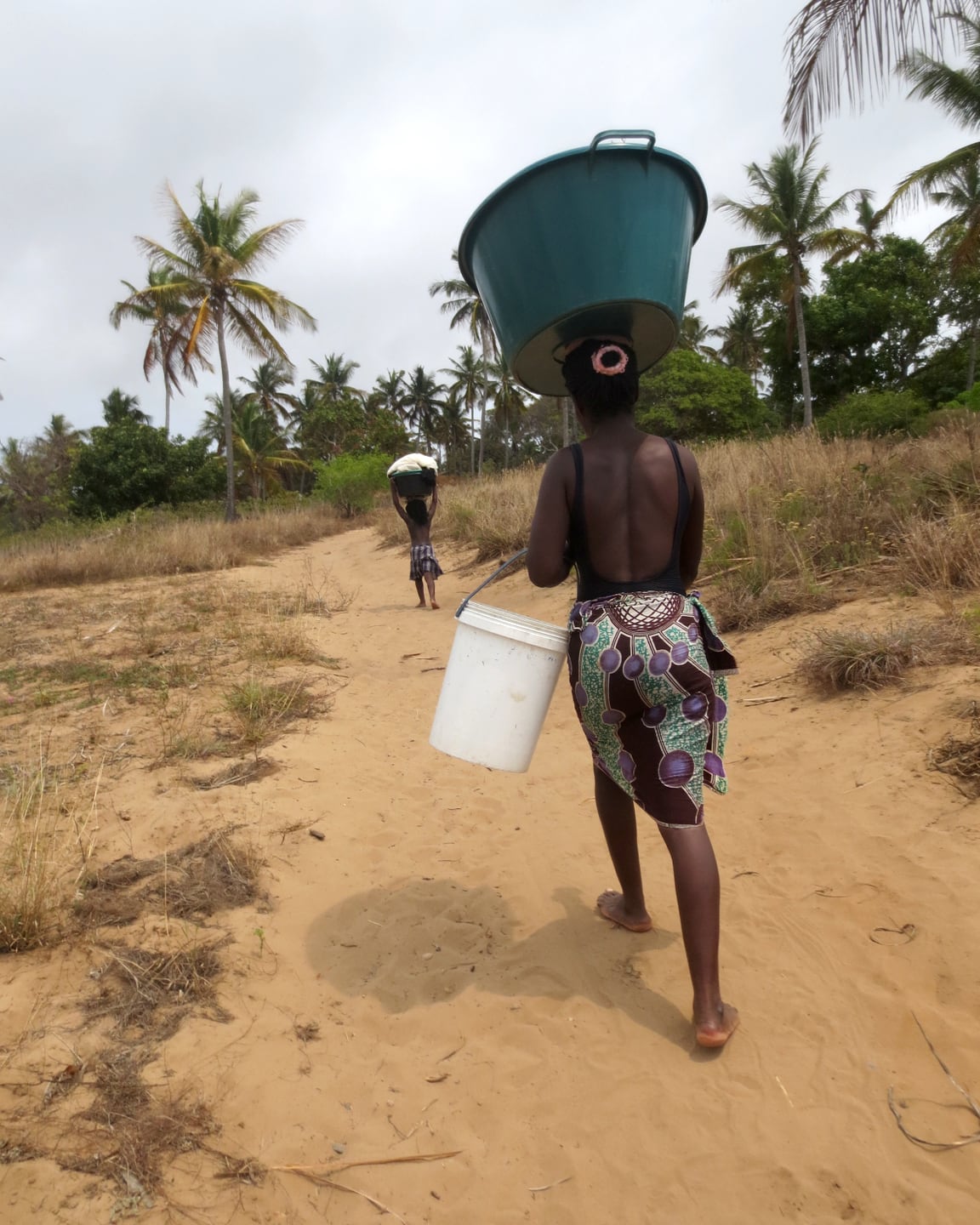
Lori and I had wrestled so long with going back to Morrumbene a second time, and in the end, the decision was made for us. However, returning to Linga Linga was one of the best decisions we could have made, and seeing Lucio was just a great experience. For so long, Linga Linga was the gold standard for which all subsequent beaches were judged, and still remains today, to an extent. Despite the addition of lodges and other signs of development along the coastline, I’d imagine that there are few places in the world that can offer what Funky Monkey’s and Lucio can offer — something truly authentic and off the beaten path. I counted myself among the fortunate to have discovered this place ten years ago, and feel even more fortunate now to have made the trip back and to have been able to introduce Lori to this magical place. Who knows how long Linga Linga and Lucio’s can stave off the outside world. When I left Mozambique in 2006, I was sure that the place would be unrecognizable upon my return — but it still remains much the same as it was and perhaps it will continue to be so. I sincerely hope that Lucio and his family continue to be able to derive their livelihood from the sea and that visitors return to the Funky Monkey in the numbers they once did. At this point, it really could go either way — time will tell, I suppose.
